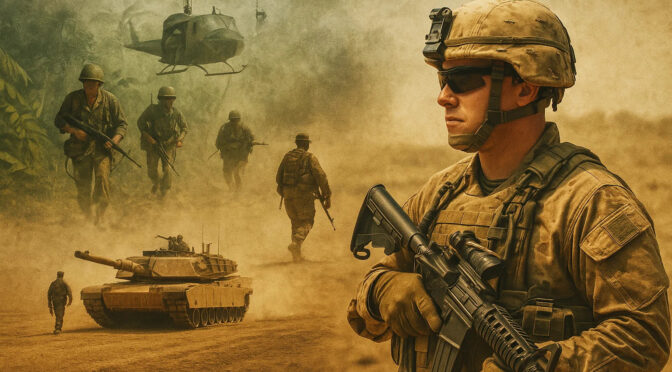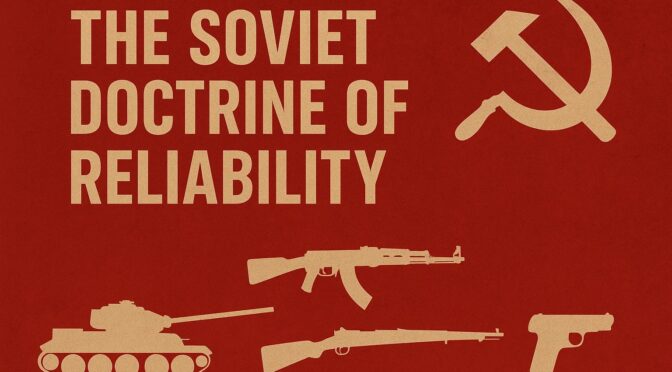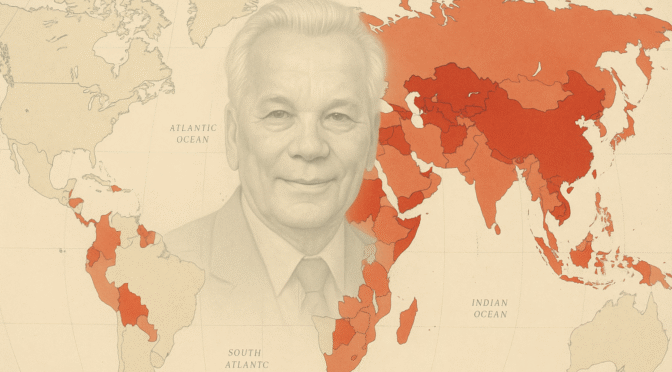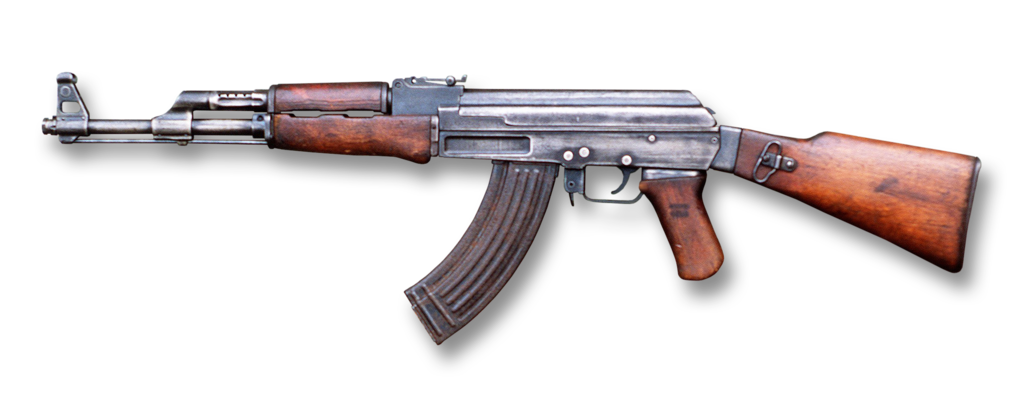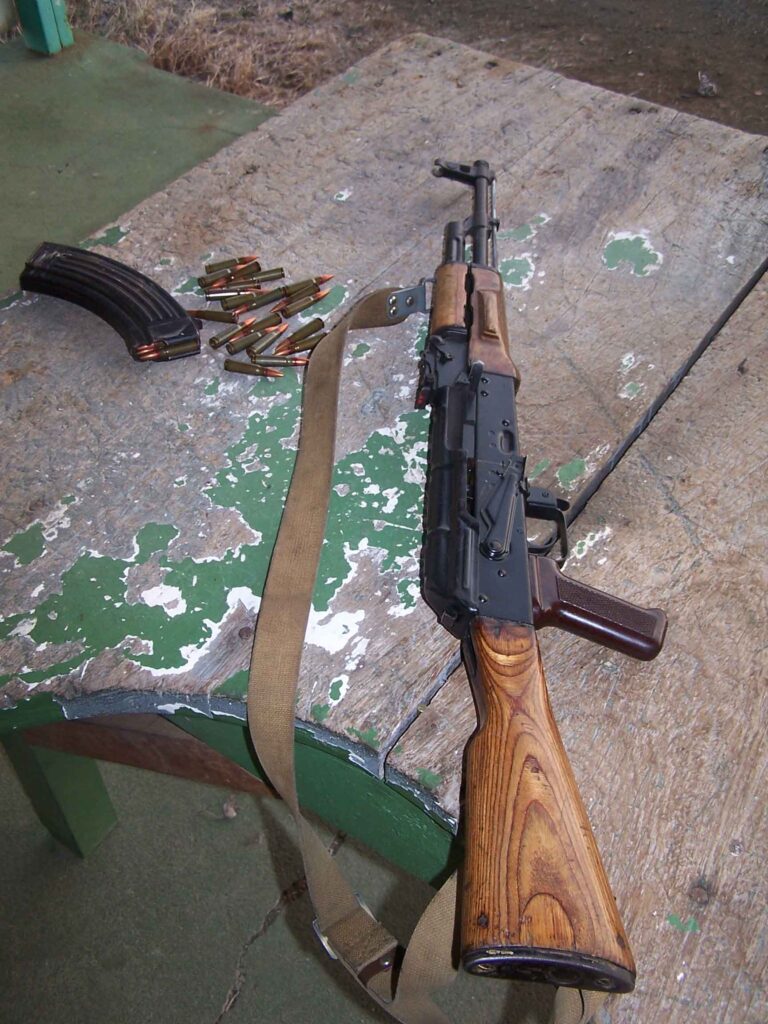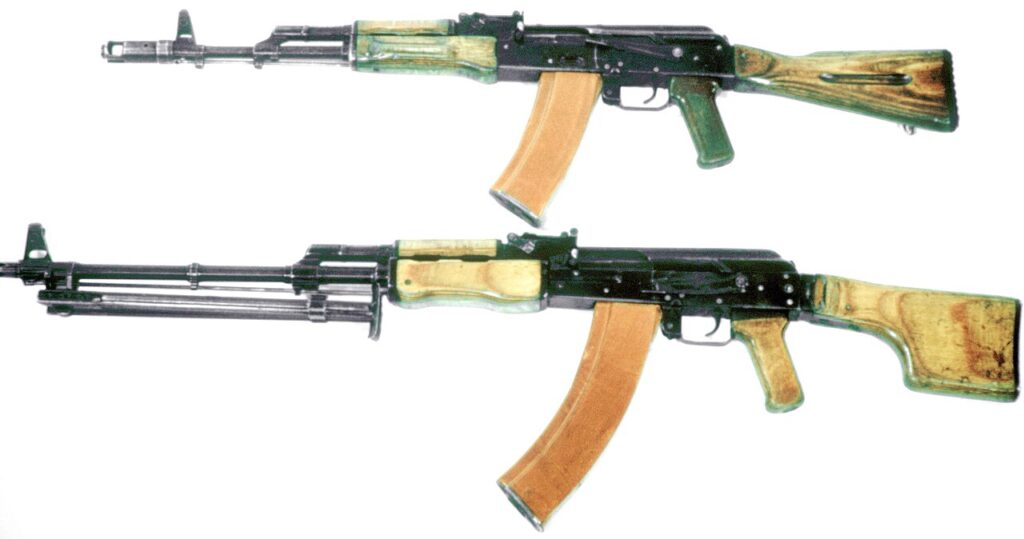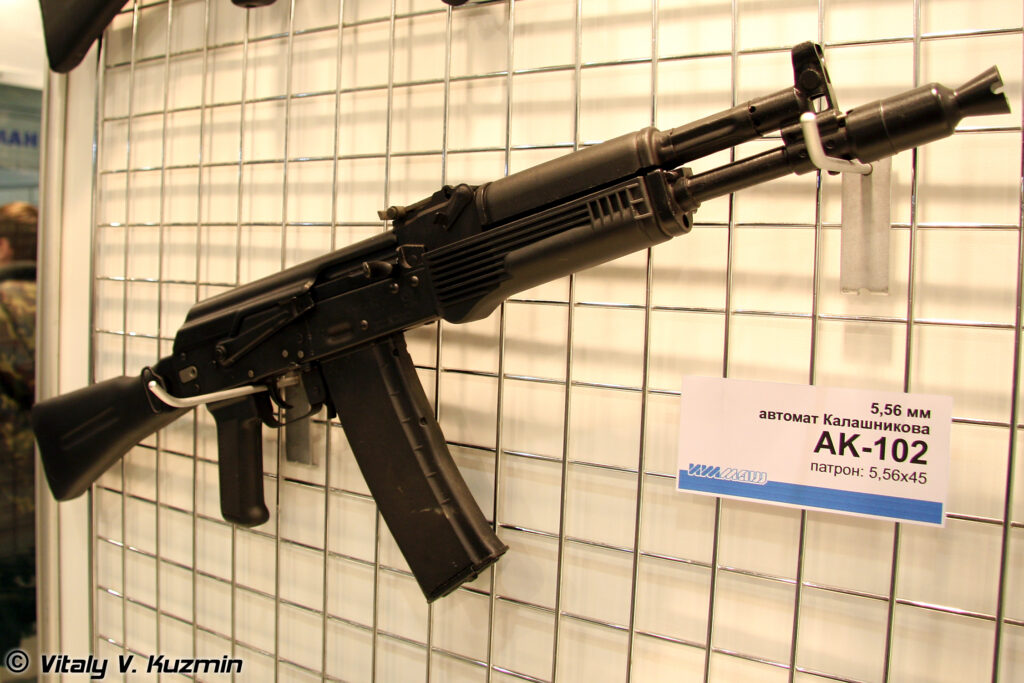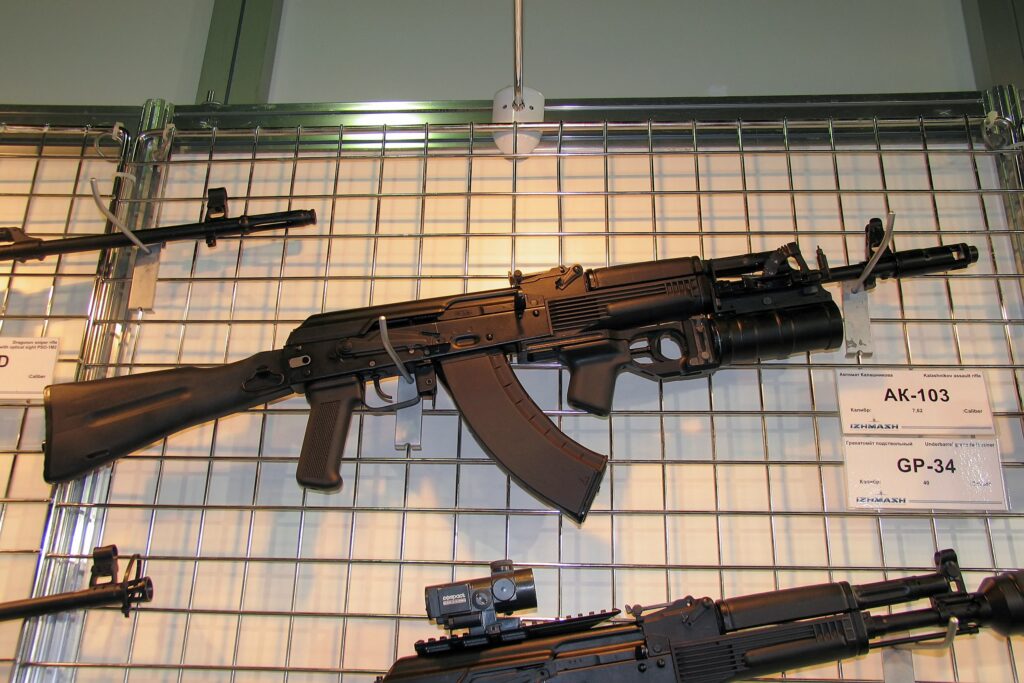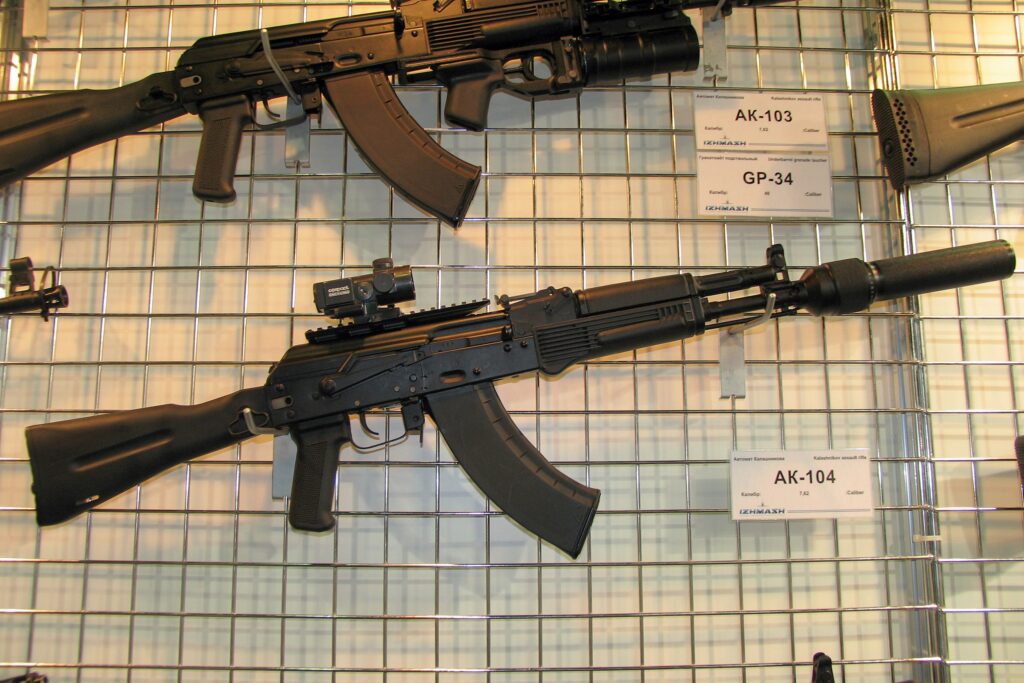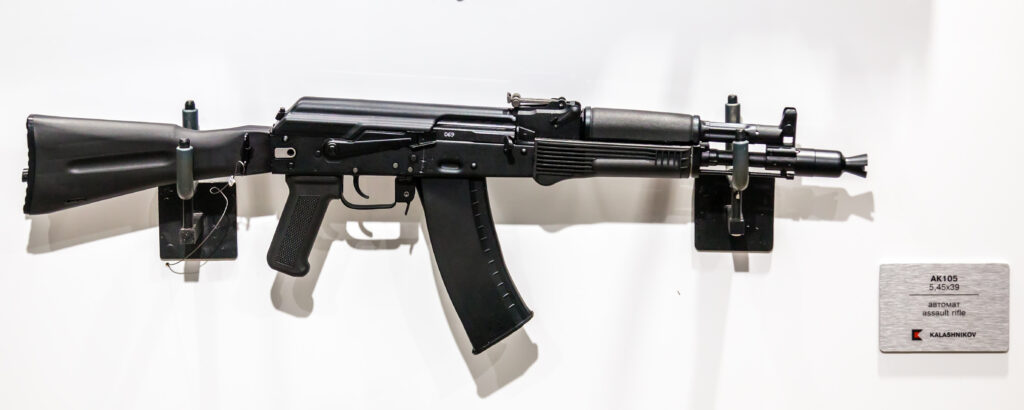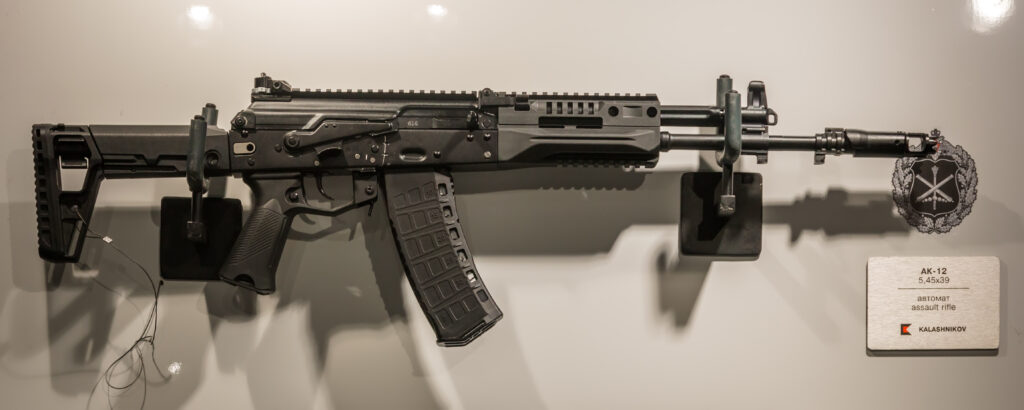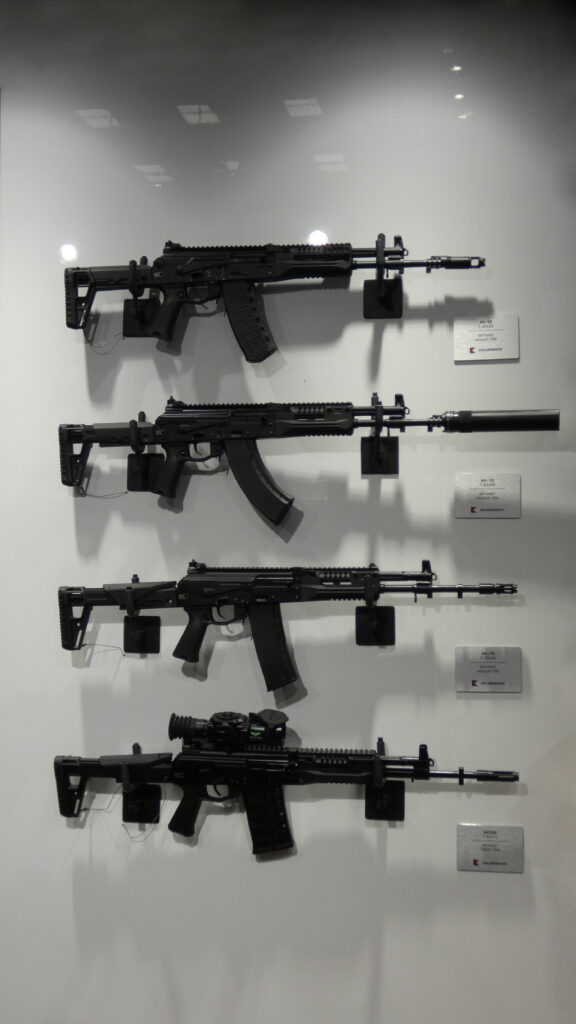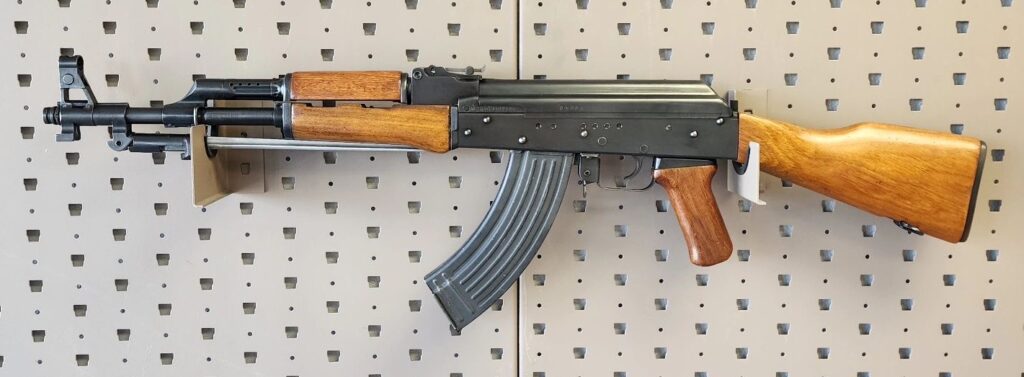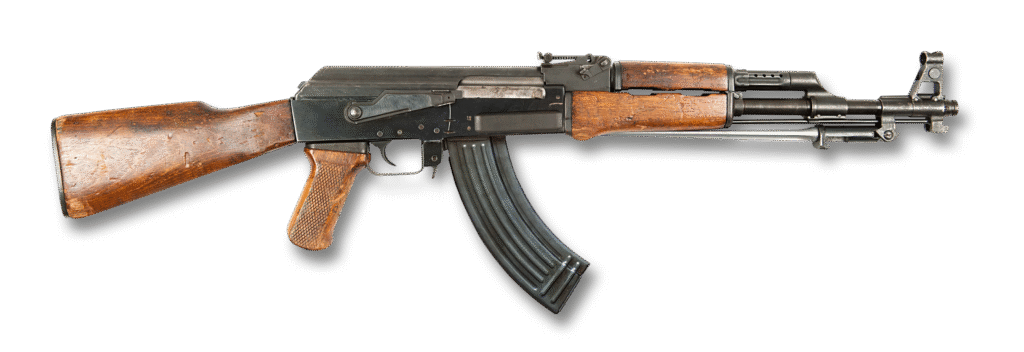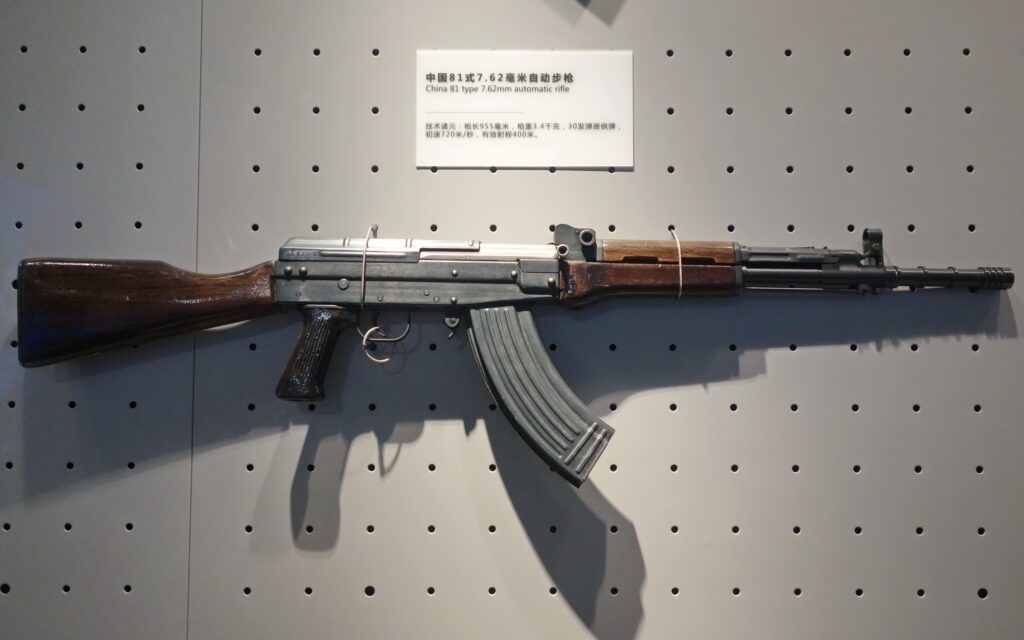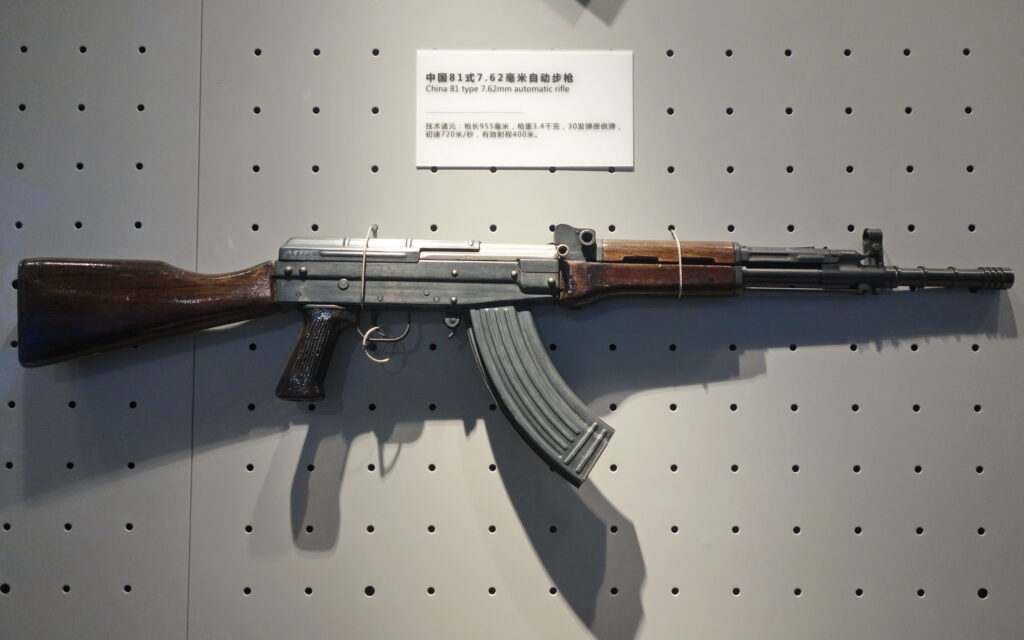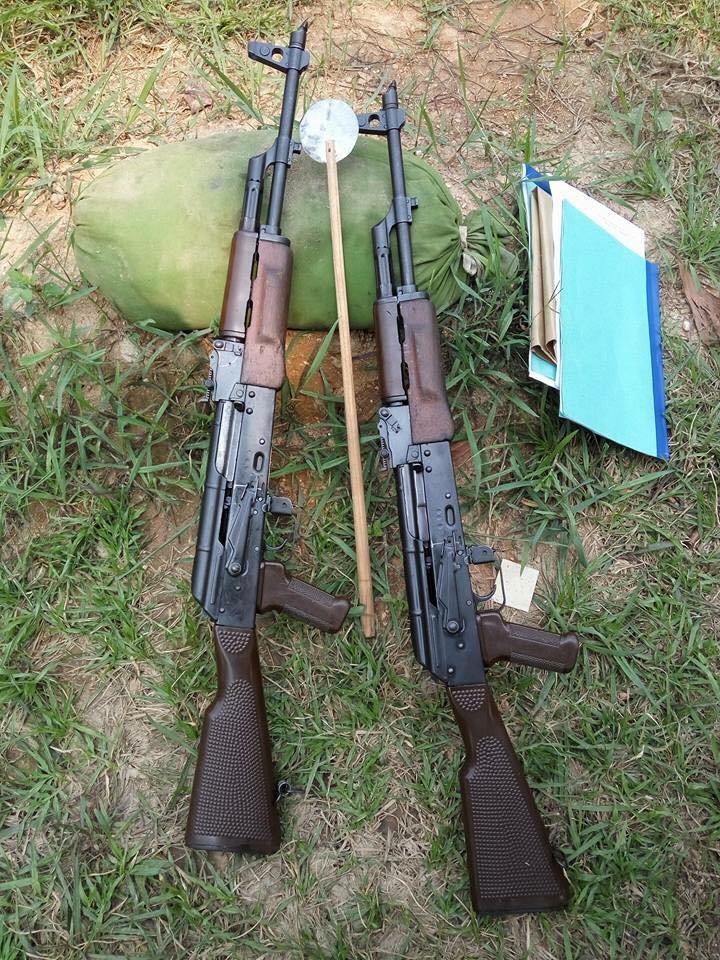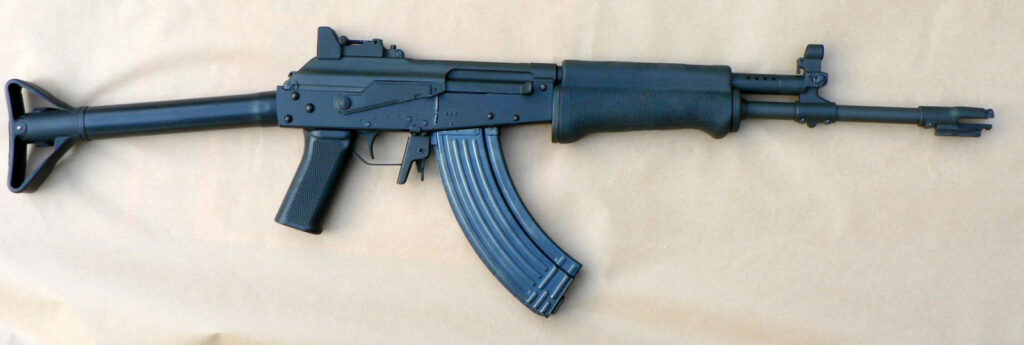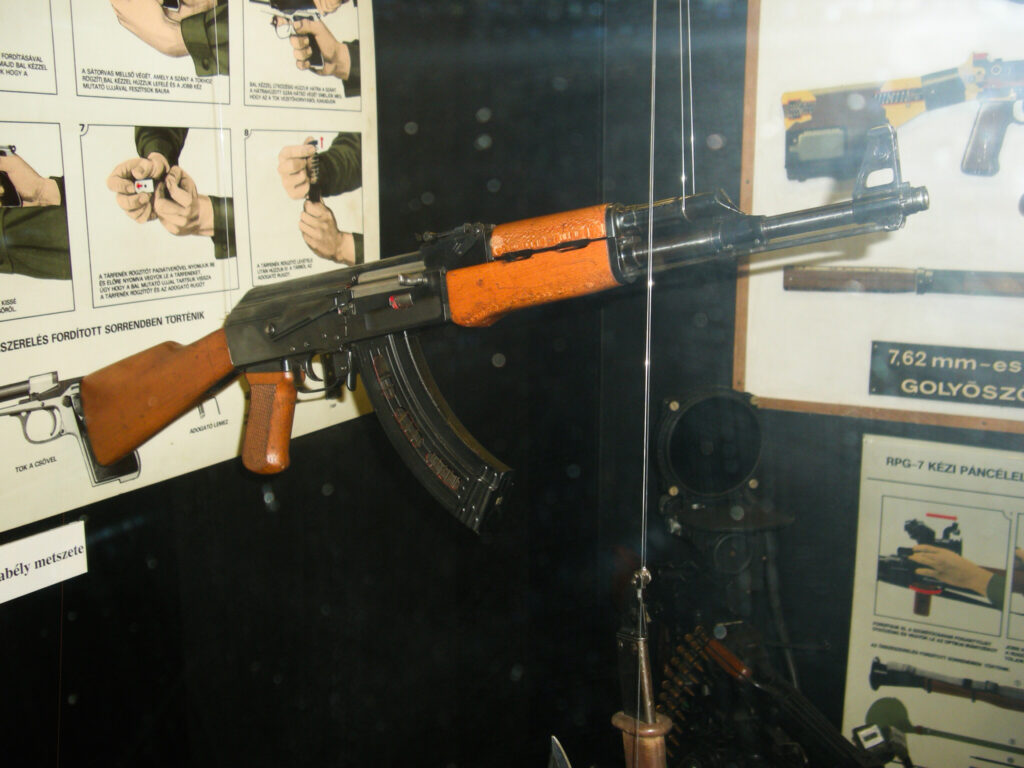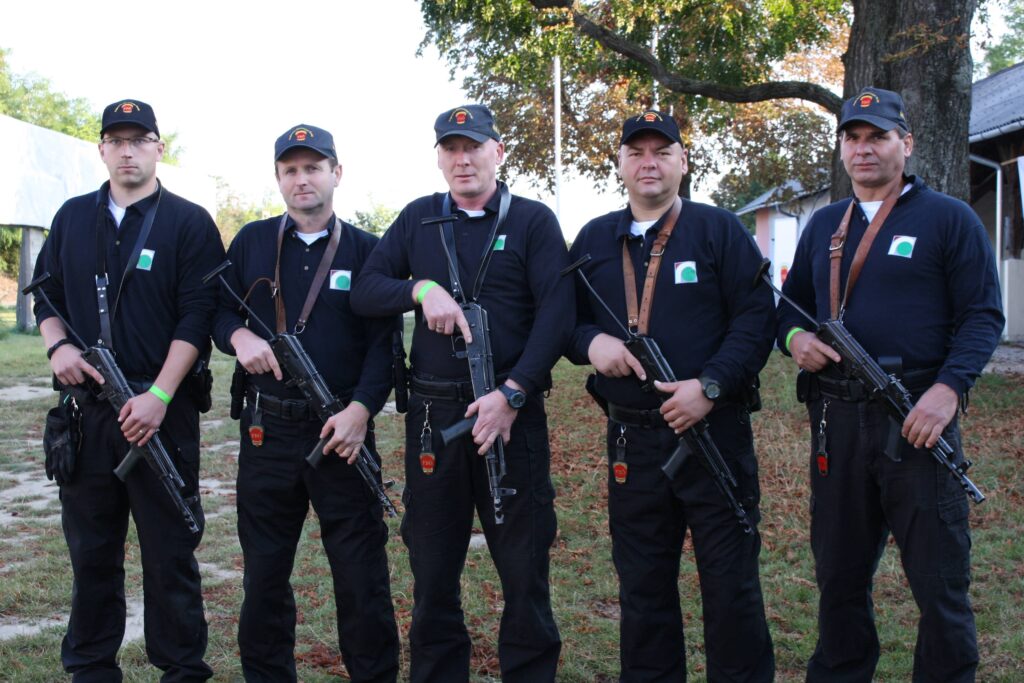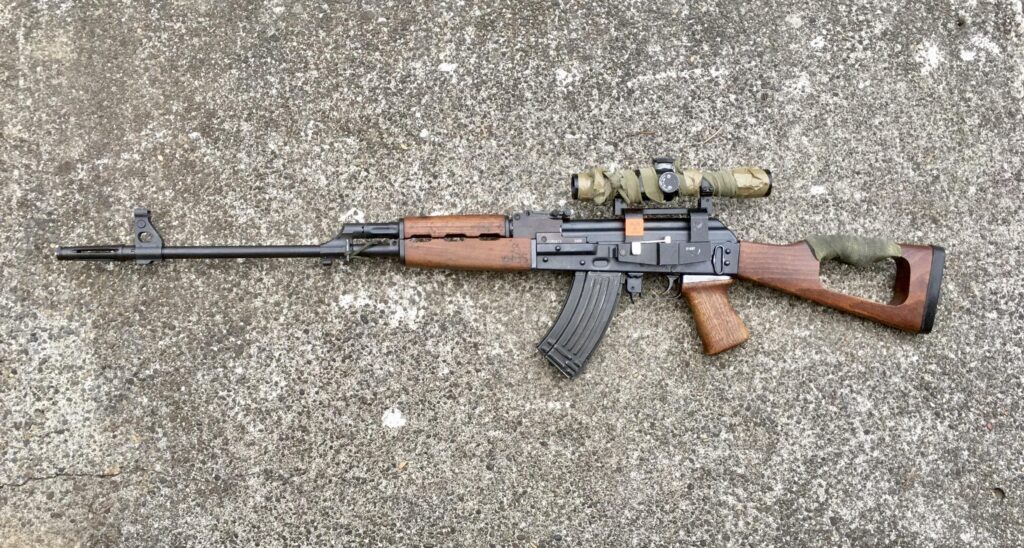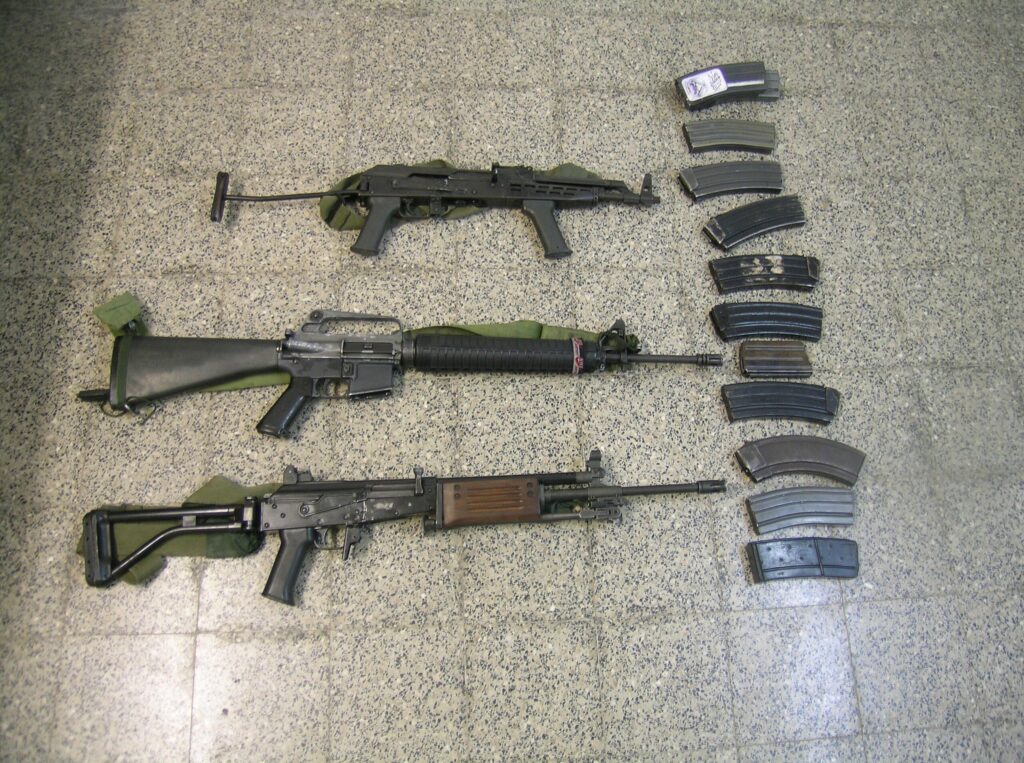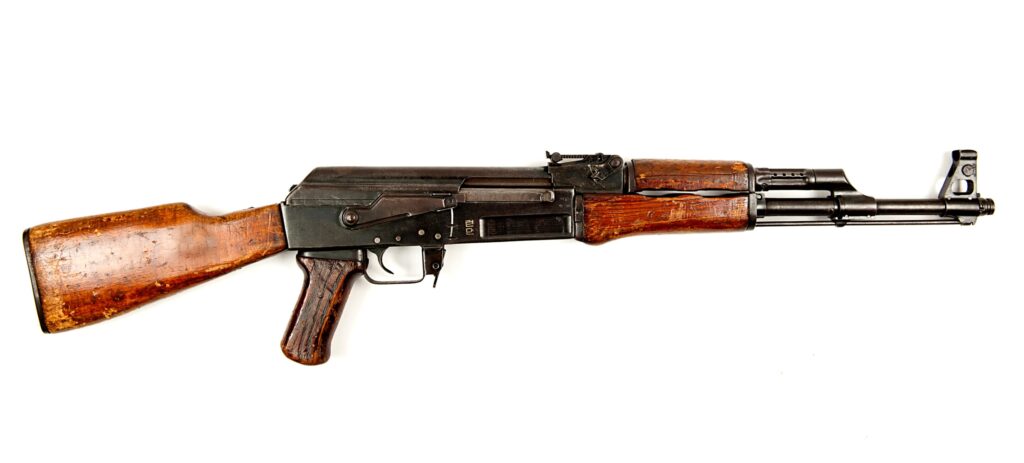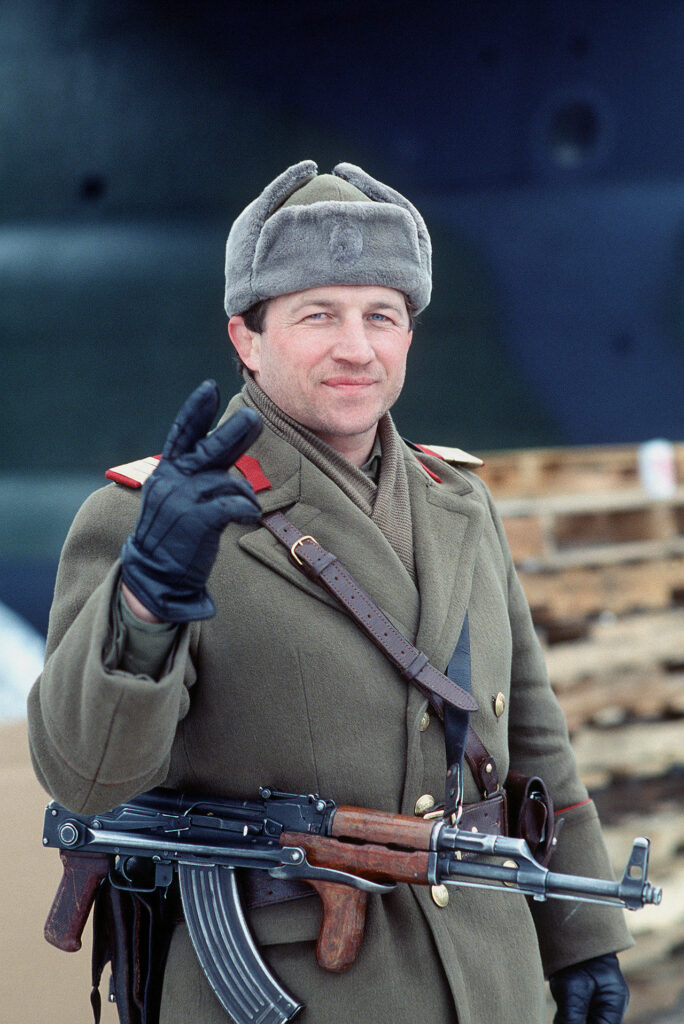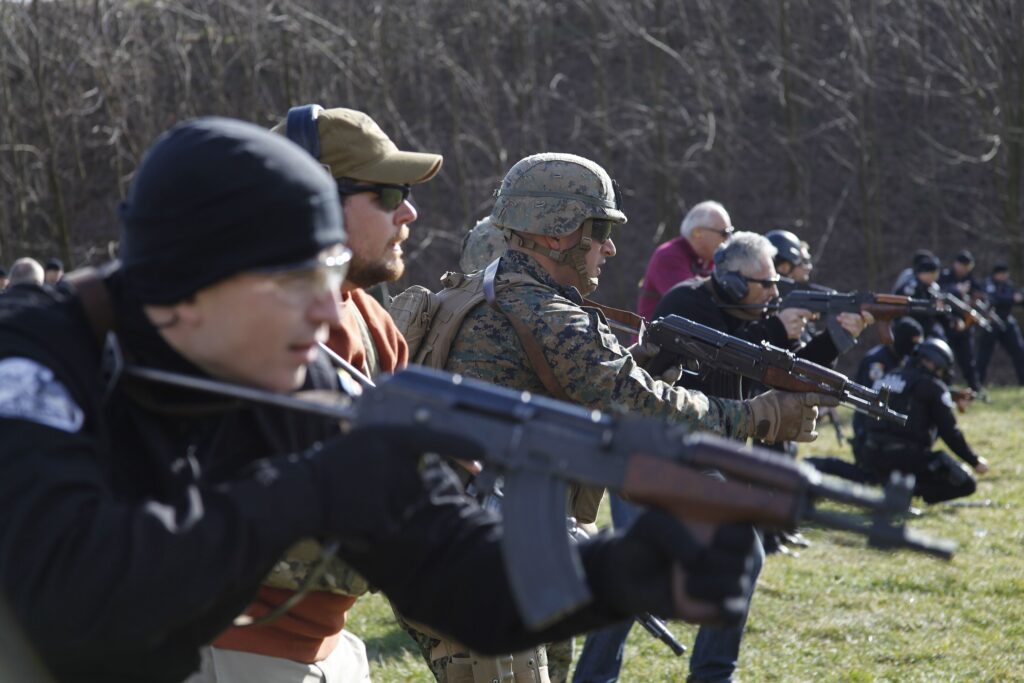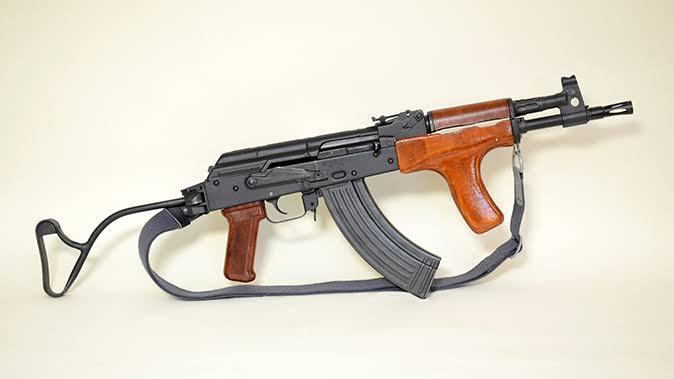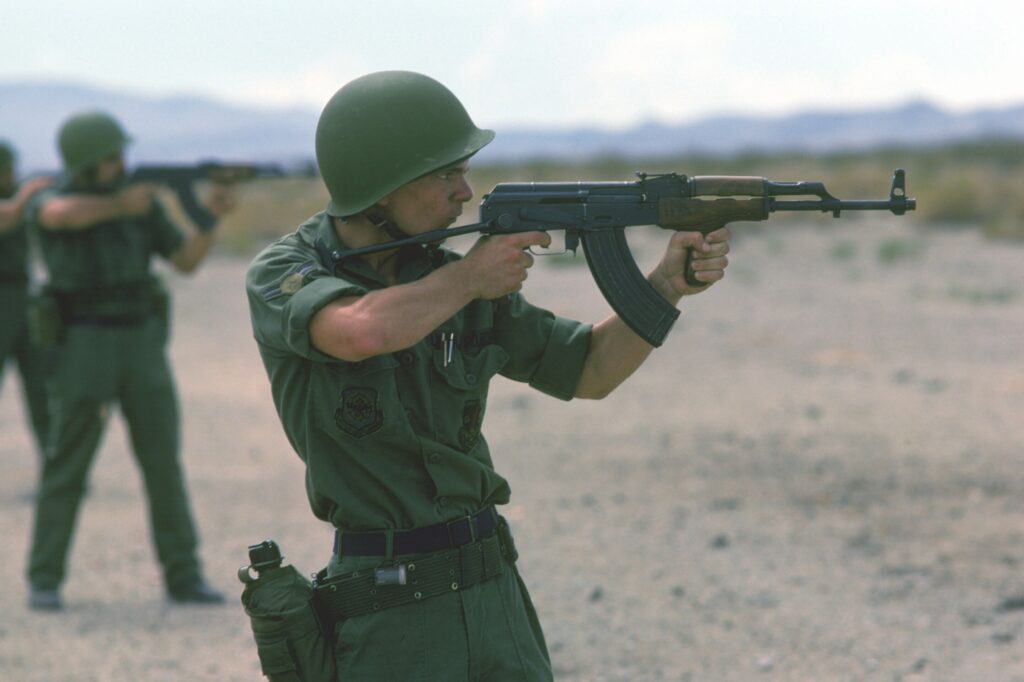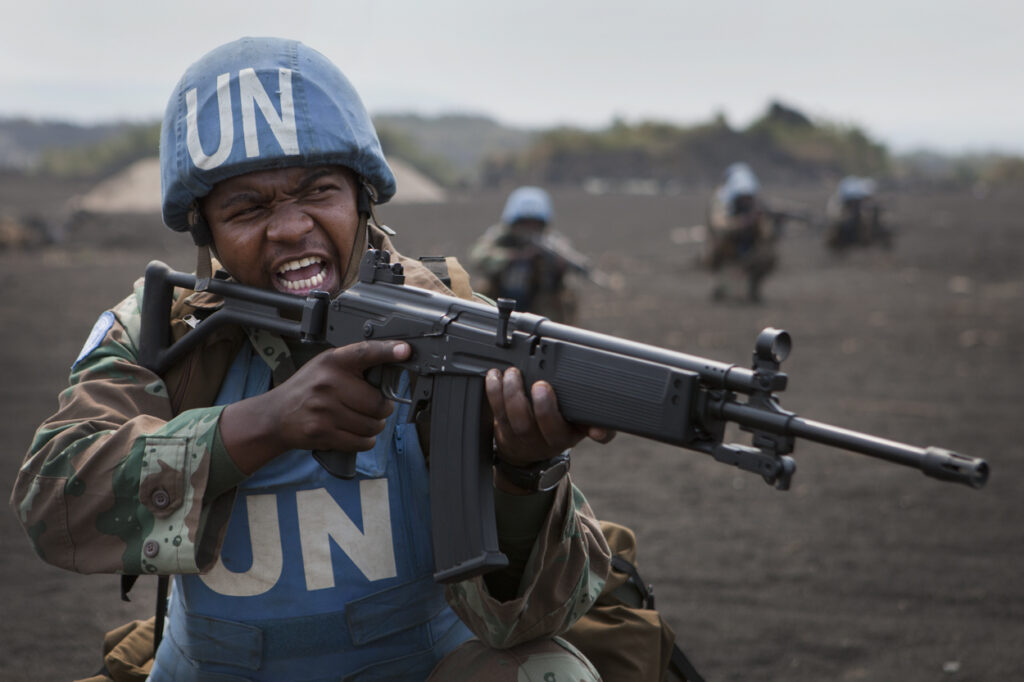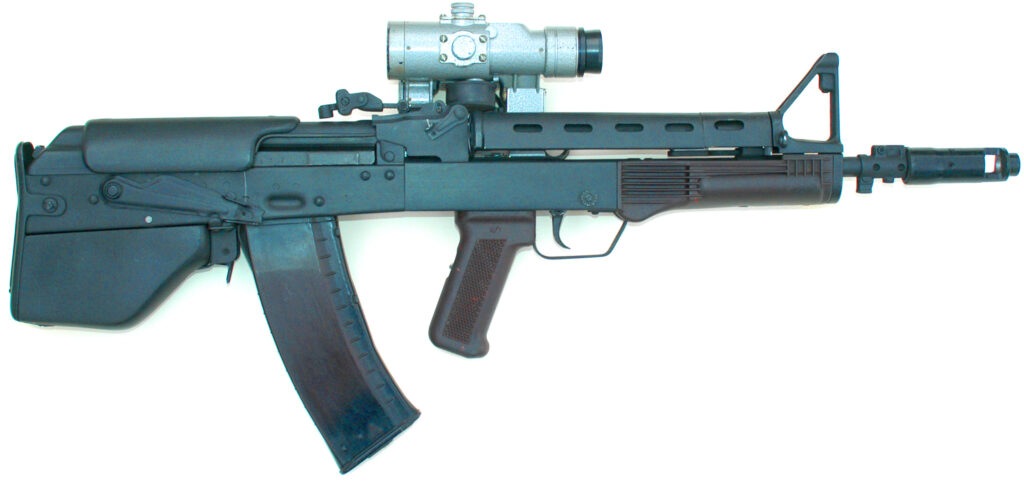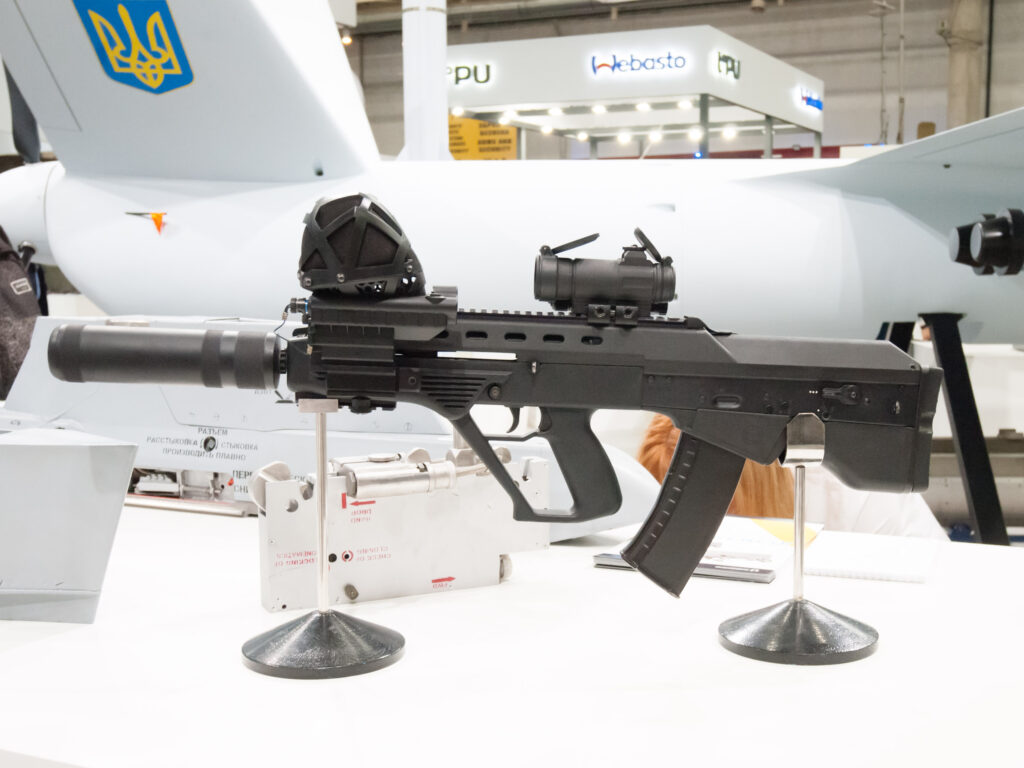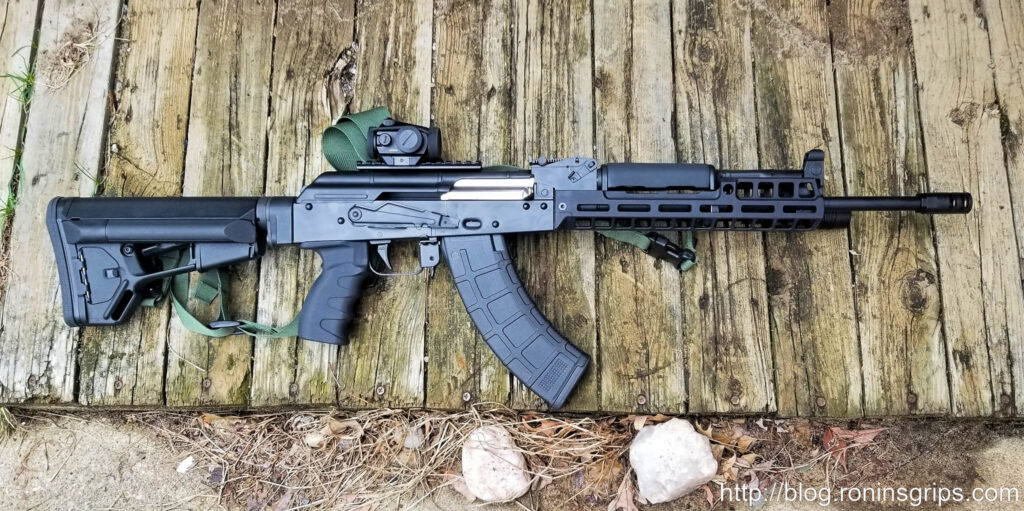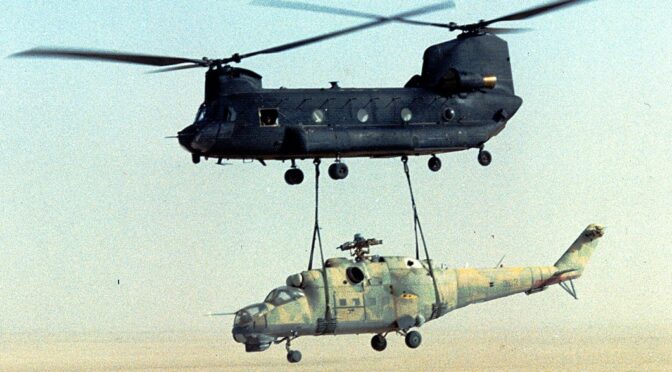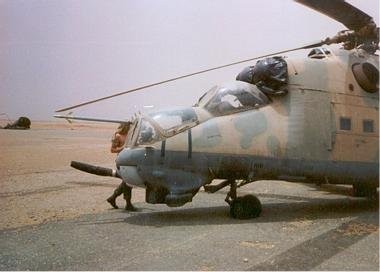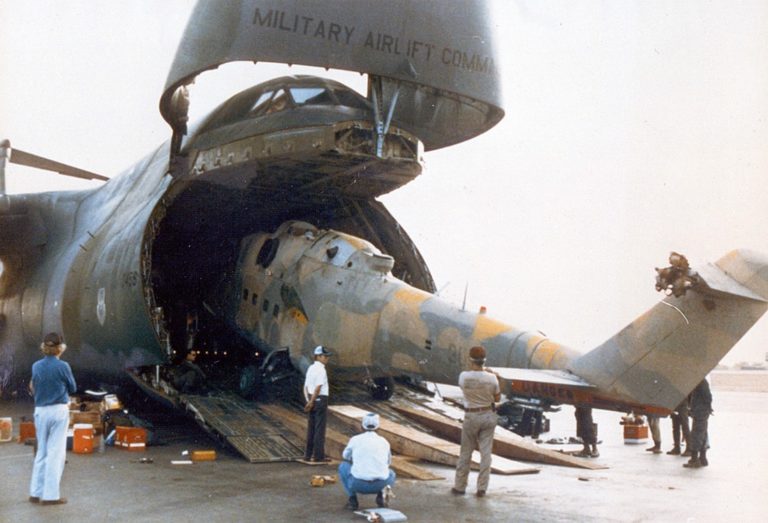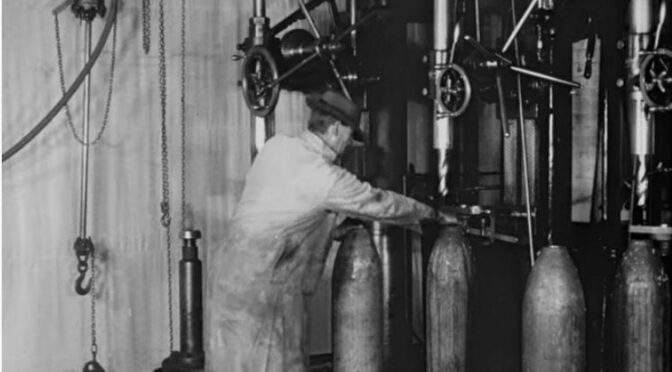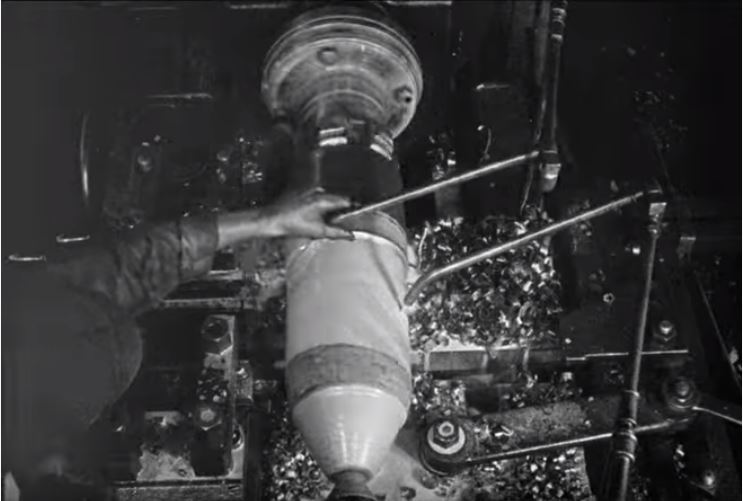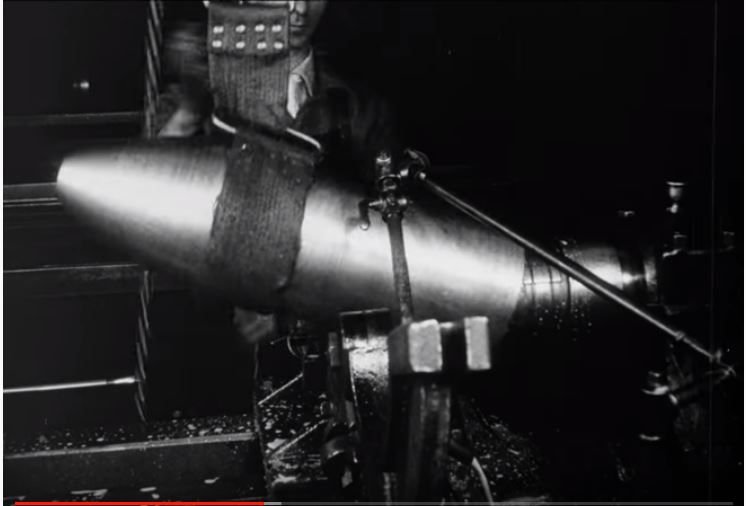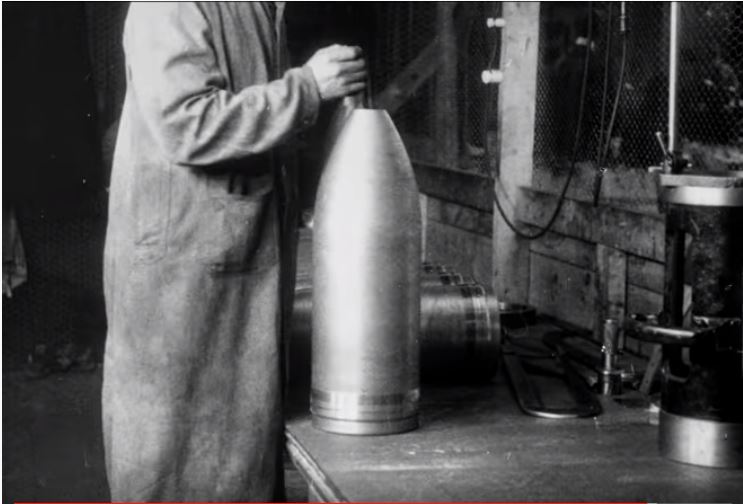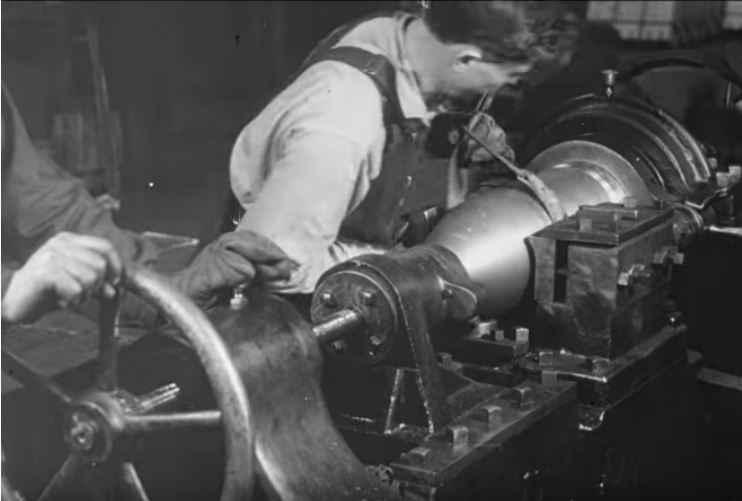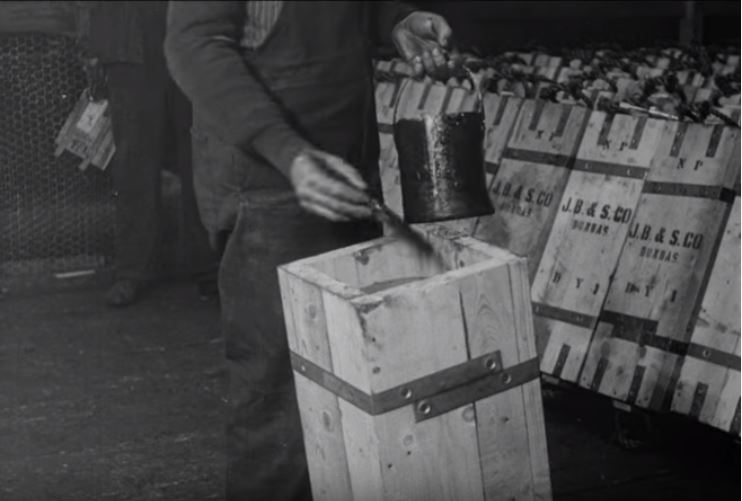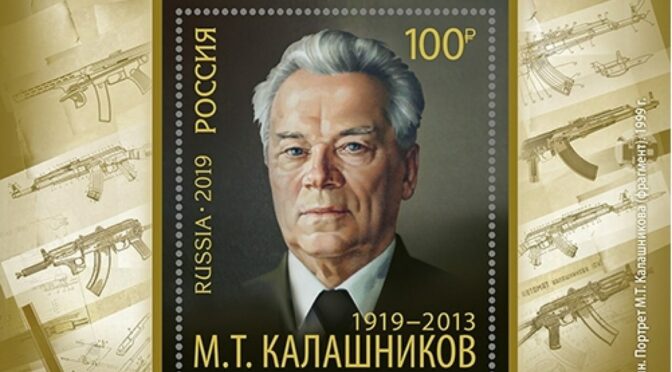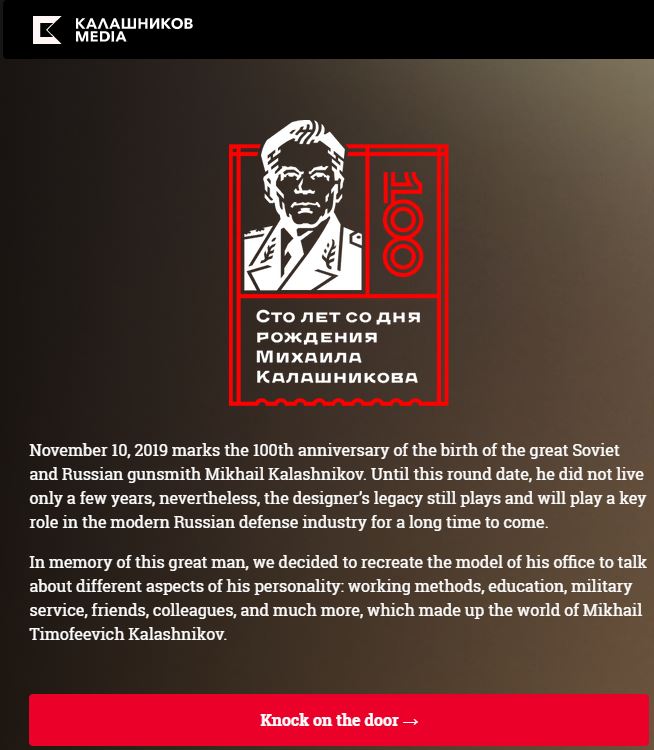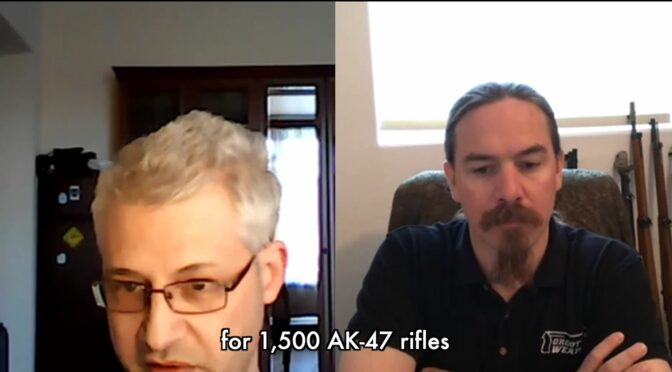The history of the United States military over the past half-century is a narrative of profound transformation, marked by catastrophic failures, stunning triumphs, and the persistent, often painful, process of institutional learning. From the jungles of Vietnam to the deserts of Iraq and the mountains of Afghanistan, this period represents a continuous, and at times cyclical, effort to understand and master the application of military force in a world of ever-changing threats. This report presents an analytical review of this arc, examining the key lessons derived from major U.S. conflicts and operations since the end of American involvement in Vietnam. The central thesis of this analysis is that while the U.S. military has demonstrated a remarkable capacity for adaptation and learning at the tactical and operational levels, it has consistently struggled with the strategic dimension of warfare—specifically, the translation of battlefield success into durable and favorable political outcomes.
This 50-year period can be understood through three distinct, albeit overlapping, strategic eras. The first, the post-Vietnam reckoning, was a period of introspection and fundamental reform, driven by the institutional trauma of defeat and the near-collapse of the force. The painful lessons from Vietnam, the disastrous Iran hostage rescue attempt, and the deeply flawed intervention in Grenada were the necessary catalysts for the most significant military reforms in modern American history, forging a professional, all-volunteer, and truly joint force.
The second era, corresponding with the “unipolar moment” of the 1990s, saw this rebuilt force achieve unprecedented conventional dominance. The overwhelming victory in the 1991 Persian Gulf War seemed to vindicate the new American way of war. Yet, this decade was also marked by the messy, frustrating, and politically complex challenges of humanitarian intervention and “operations other than war” in places like Somalia, Haiti, and the Balkans. These missions exposed the limits of conventional military power and forced the U.S. to grapple with the complexities of nation-building and peacekeeping, often with ambiguous results.
The third and most recent era began with the terrorist attacks of September 11, 2001, which plunged the United States into two decades of protracted, asymmetric warfare in Afghanistan and Iraq. These “forever wars” represented a catastrophic failure to internalize or remember the core strategic lessons of Vietnam. Despite immense expenditures of blood and treasure, and despite remarkable tactical innovations in counter-insurgency, these campaigns ultimately failed to achieve their strategic objectives, leaving behind a legacy of instability and questioning the very utility of large-scale military intervention. This report will trace this arc, dissecting the key lessons—what to do and what not to do—from each major conflict, demonstrating how the lessons of one war often shaped, and sometimes misshaped, the conduct of the next.
Part I: The Post-Vietnam Reckoning and the Rebuilt Force (1975-1989)
The period between the fall of Saigon and the invasion of Panama was arguably the most transformative in the modern history of the U.S. military. It began with a “hollow force” demoralized by defeat and plagued by systemic internal problems.1 It ended with a highly professional, technologically advanced, and newly joint force poised for unprecedented conventional dominance. This transformation was not the result of a single visionary plan but was forged in the crucible of painful, often humiliating, operational failures. These failures provided the undeniable impetus for sweeping reforms that overcame decades of institutional inertia and inter-service rivalry, laying the foundation for the military that would fight and win in the decades to come.
1.1 The Enduring Shadow of Vietnam (1964-1975)
The Vietnam War serves as the foundational event for any analysis of modern U.S. military history. The American failure in Southeast Asia was not, at its core, a failure of tactical execution on the battlefield; it was a profound strategic and political miscalculation from which the military and the nation would draw lessons for generations.2 The United States intervened with a staggering ignorance of Vietnam’s history, culture, and language, fundamentally misinterpreting a nationalist civil war and social revolution as a simple front in the global Cold War against communism.3 This ignorance was compounded by an institutional arrogance—a belief that America’s overwhelming military superiority, its advanced technology and immense firepower, could compensate for a flawed political strategy and force a favorable outcome.3
This approach was doomed from the start. The United States committed its power in support of a South Vietnamese government, beginning with the Diem regime, that lacked popular legitimacy and commanded little loyalty outside a small Catholic minority.3 The war was, as some analysts have concluded, “lost politically before it ever began militarily”.3 Military action, detached from a viable political objective, proved counterproductive. The heavy-handed tactics of the Saigon regime, combined with the destructive impact of American firepower, often drove the very population the U.S. sought to win over into the arms of the National Liberation Front (NLF).3
Beyond the strategic failure, the war precipitated an existential crisis within the U.S. military itself. The pressures of a protracted and increasingly unpopular war on a conscripted, racially integrated force were immense. The military, which had prided itself on seeing only one color—olive drab—was forced to confront deep-seated racial tensions that erupted into violence on bases at home and in the field.2 The failing war effort led to a catastrophic breakdown in discipline, manifesting in high rates of soldiers going AWOL, widespread drug and alcohol abuse, and even instances of “combat refusal,” where units would not engage the enemy.2 This internal decay reached a point where it began to “challenge the ability of the US Army to fulfill its mission of national defense,” a crisis of the first order for the institution.2
The lessons drawn from this experience were deep and lasting. The so-called “Vietnam Syndrome” was not merely a public aversion to foreign entanglements; it was an institutional imperative within the military to prevent a repeat of this internal breakdown. The establishment of the All-Volunteer Force was a direct response, aimed at creating a more professional and disciplined military. Concurrently, the strategic lessons coalesced into what would later be articulated as the Powell Doctrine: the conviction that the U.S. should only commit forces to combat when vital national interests are at stake, when there are clear and achievable objectives, when there is broad public and congressional support, and when overwhelming force can be applied to achieve a decisive victory.4 This doctrine was designed not only to ensure victory but to protect the military institution itself from being gradually destroyed by another ambiguous, protracted, and politically unsupported conflict. This created a powerful and understandable institutional preference for short, decisive, high-intensity conventional wars—and a deep-seated aversion to messy, political, and open-ended counter-insurgencies. This preference, born from the trauma of Vietnam, would prove to be a strategic vulnerability when the U.S. was inevitably drawn back into precisely those kinds of conflicts decades later.
1.2 Reforming the Machine: From Desert One (1980) to Grenada (1983)
If Vietnam exposed the strategic bankruptcy of the U.S. military, two smaller operations in the following decade laid bare its profound operational and organizational dysfunction. Operation Eagle Claw, the failed 1980 attempt to rescue American hostages in Iran, and Operation Urgent Fury, the 1983 invasion of Grenada, were pivotal events. Though tactical in scale, their failures were so glaring and public that they provided the undeniable evidence needed to force fundamental, and long-overdue, structural reforms upon the Department of Defense.
Operation Eagle Claw was an unmitigated disaster that starkly revealed the decrepitude of the post-Vietnam “hollow force”.1 The mission, though courageous in its conception, was plagued by a cascade of failures. An ad-hoc command structure was created for the mission, bypassing established contingency planning staffs in the name of security. This resulted in ill-defined lines of authority and a complete lack of a coherent joint training plan.1 The obsession with operational security (OPSEC) became self-defeating; information was so tightly compartmentalized that planners could not conduct independent reviews, and the various service components never conducted a full, integrated rehearsal before launching the mission.1 This lack of coordination proved fatal at the Desert One staging area in Iran. Equipment, particularly the RH-53D helicopters that were not designed for such a mission, failed under operational stress.1 Communications between services were fractured, and when a collision between a helicopter and a C-130 transport aircraft caused a fire, the chaotic scene lacked a clear on-scene commander to restore order.1 The mission was aborted in tragedy, leaving behind dead servicemen, abandoned aircraft, and compromised classified materials.1
Three years later, the invasion of Grenada, while ultimately successful in achieving its objectives, was another showcase of inter-service dysfunction. The operation was marred by “persistent interservice rivalries; flawed communications; excessive secrecy; and… ‘unforgivable blunders’ in vital intelligence-gathering”.6 There was virtually no intelligence available on the island; the CIA had no assets on the ground, and the only maps available to invading forces were tourist maps lacking precise military grid coordinates.6 The command-and-control structure was convoluted and improvised at the last minute.6 Communication systems between the services were incompatible, leading to an Army unit being unable to call for naval gunfire support and resorting to using a commercial AT&T credit card to call back to Fort Bragg to request air support.6 In a now-infamous incident that epitomized the depth of the problem, a senior Marine officer initially refused a request to transport Army Rangers on Marine helicopters, relenting only after being directly ordered to do so by a higher authority.6
These two operations, though small, were disproportionately influential because their flaws were so fundamental and undeniable. They demonstrated that the U.S. armed services, as structured, could not effectively fight together as a coherent team. The public humiliation of Desert One and the near-disaster in Grenada created the political will in Congress to overcome decades of entrenched service parochialism and resistance from the Pentagon. The direct result was the landmark Goldwater-Nichols Department of Defense Reorganization Act of 1986. This legislation fundamentally reshaped the military by strengthening the authority of the Chairman of the Joint Chiefs of Staff and the unified combatant commanders, forcing the services to operate jointly. In parallel, the lessons from Eagle Claw gave direct impetus to the creation of the U.S. Special Operations Command (USSOCOM) in 1987, unifying the various special operations forces under a single command with its own budget and authority.1 These reforms were not merely bureaucratic shuffling; they were the essential bedrock upon which the operational successes of the next decade, particularly in Panama and the Persian Gulf, were built. The hard-won lesson was that jointness was not an optional extra or a matter of preference; it was an absolute prerequisite for success in modern warfare.
1.3 Limited Force and Ambiguous Missions: Lebanon (1982-84), Libya (1986), and the Iran-Iraq War (1980s)
The 1980s also saw the United States engage in a series of interventions and proxy engagements that highlighted the immense difficulty of applying limited military force to achieve complex and often ambiguous political objectives. These operations in Lebanon, Libya, and the Persian Gulf provided cautionary lessons about mission clarity, the nature of peacekeeping, and the unintended long-term consequences of strategic choices.
The deployment of U.S. Marines to Beirut in 1982 as part of a Multinational Force is a tragic case study in the failure of peacekeeping without a peace to keep.9 The Marines were inserted into the maelstrom of the Lebanese Civil War with an “unclear mandate”.10 Initially tasked with overseeing the withdrawal of the Palestine Liberation Organization (PLO), their mission evolved, but their status remained ambiguous. The Reagan administration misread the complex sectarian dynamics, viewing the conflict through a simplistic Cold War lens and backing the pro-Israeli Christian factions, which fatally compromised the U.S. force’s neutrality.11 As a result, the Marines went from being perceived as neutral peacekeepers to being seen as active participants in the conflict, making them a target for factions backed by Syria and Iran.10 This culminated in the catastrophic bombing of the Marine barracks on October 23, 1983, which killed 241 American servicemen. The U.S. subsequently withdrew its forces, leaving behind a power vacuum that was filled by Syria and its Iranian-backed proxy, Hezbollah, which evolved from a small terrorist cell into a formidable regional power.10 The primary lesson from Lebanon was stark: a military force deployed with an ambiguous mission into a multi-sided civil war, without the political leverage or will to impose a settlement, will inevitably become a target and its mission will fail.
In contrast, the 1986 bombing of Libya, Operation El Dorado Canyon, was a mission with a much clearer, albeit limited, objective: to punish the Qaddafi regime for its role in the bombing of a Berlin discotheque frequented by U.S. service members and to deter future acts of state-sponsored terrorism.12 The operation was a remarkable feat of military logistics and execution. Denied overflight rights by key European allies like France and Spain, U.S. Air Force F-111s based in the United Kingdom had to fly a grueling 6,400-mile round trip, requiring multiple aerial refuelings, to strike targets in Tripoli and Benghazi alongside Navy aircraft from carriers in the Mediterranean.13 The strikes were judged to be a tactical success and did lead to a reduction in Libyan-sponsored terrorism against American targets in the short term.12 However, the operation also highlighted the political costs of unilateralism and provoked asymmetric retaliation, including the murder of American and British hostages in Lebanon and the alleged Libyan involvement in the later bombing of Pan Am Flight 103.14 The lesson was that while punitive strikes can achieve short-term deterrence, they do not resolve the underlying political conflict and can invite retaliation through unconventional means.
Perhaps the most consequential U.S. involvement of the decade was its indirect role in the Iran-Iraq War. Following the Iranian Revolution and the hostage crisis, U.S. policy was driven by the imperative to prevent an Iranian victory and the expansion of Ayatollah Khomeini’s revolutionary theocracy.15 This led the Reagan administration to “tilt” toward Saddam Hussein’s Iraq, providing Baghdad with billions in economic aid, dual-use technology, and critical satellite intelligence to thwart Iranian offensives.15 This was a brutally pragmatic policy, choosing to back one dictator to contain another in a war where there were no “good guys”.15 This support was instrumental in preventing an Iraqi collapse and enabling Saddam to fight Iran to a stalemate. However, the policy had severe long-term consequences. It empowered Saddam Hussein, whose military emerged from the war as one of the largest and most battle-hardened in the region.17 The immense debt Iraq incurred during the war, combined with this newfound military power and a sense of grievance against its neighbors, were direct contributing factors to its decision to invade Kuwait in 1990.17 The U.S. policy in the 1980s thus provides a textbook example of “blowback,” demonstrating that the strategic partner of today can, as a direct result of that partnership, become the primary adversary of tomorrow.
1.4 A Paradigm of Decisive Force? Operation Just Cause, Panama (1989)
The U.S. invasion of Panama in December 1989, Operation Just Cause, stands as the capstone of the military’s post-Vietnam transformation. It was the first large-scale combat test of the joint force forged by the Goldwater-Nichols reforms and was widely seen as a resounding success, a model of how to apply military power effectively to achieve clear political aims.18 The operation was launched with four unambiguous and limited objectives: to safeguard the lives of American citizens, to restore the democratically elected government, to apprehend dictator Manuel Noriega on drug trafficking charges, and to protect the integrity of the Panama Canal Treaty.20
The execution of the operation was a testament to the new emphasis on jointness and planning. It was a complex, multi-service assault involving nearly 27,000 troops, with airborne, air-assault, and special operations forces striking two dozen targets simultaneously across the country in a classic coup de main.18 The planning was extensive and detailed, and the forces were well-rehearsed, contributing to a swift and decisive military victory.18 The combat phase was largely over within a matter of days, achieving its objectives at a relatively low cost of 23 American combat deaths.22
Operation Just Cause was hailed as the ultimate vindication of the post-Vietnam reforms. It was everything that Vietnam, Eagle Claw, and Grenada were not: swift, decisive, overwhelmingly powerful, and successful in achieving its stated political goals in the short term.22 The operation appeared to offer a new paradigm for the post-Cold War era: the clean, surgical application of military force to remove a rogue regime and restore democracy.
However, the very success of Operation Just Cause embedded a dangerous and misleading lesson. The operation took place in a uniquely permissive and favorable environment. The U.S. military had a massive pre-existing presence in Panama, deep familiarity with the terrain, and extensive intelligence on the Panamanian Defense Forces (PDF), which it had trained for years.21 The PDF was a small and relatively weak adversary, and crucially, the Panamanian population largely welcomed the American intervention and offered no resistance.21 It was a unilateral operation, unencumbered by the complexities of coalition warfare.21
The danger was that U.S. military and political leaders mistook an operational success in a uniquely favorable context for a universally applicable strategic template. The “Panama model” reinforced the institutional preference for using overwhelming force to achieve rapid regime change, creating an illusion that such interventions could be quick, low-cost, and decisive. This model heavily influenced the mindset that planned the 1991 Gulf War and, more catastrophically, shaped the fatally optimistic assumptions for the 2003 invasion of Iraq. In that later conflict, the U.S. would discover that the post-conflict environment was infinitely more complex and hostile, and that the welcoming crowds of Panama City would not be replicated in Baghdad. The lesson taken from Panama was that overwhelming force works; the critical lesson that was missed was that the unique political and social conditions of the battlespace are often more decisive than the balance of military power.
Part II: The “New World Order” and Its Discontents (1990-2001)
The collapse of the Soviet Union left the United States as the world’s sole superpower, ushering in a decade of American military primacy. This period, often termed the “unipolar moment,” was defined by a stark contrast in the application of U.S. military power. It began with the spectacular conventional triumph of the First Gulf War, which seemed to confirm the dominance of the American way of war. However, the remainder of the decade was dominated by messy, frustrating, and politically fraught humanitarian interventions. These “Operations Other Than War” in Somalia, Haiti, and the Balkans challenged the neat paradigms of the Powell Doctrine and forced a reluctant U.S. military to grapple with the ambiguous challenges of peacekeeping, stability operations, and coercive diplomacy, generating a new set of complex and often contradictory lessons.
2.1 The Powell Doctrine Vindicated: The First Gulf War (1991)
Operation Desert Storm, the U.S.-led campaign to liberate Kuwait from Iraqi occupation, was the textbook application and triumphant vindication of the military doctrine forged in the ashes of Vietnam.4 Every element of the Powell Doctrine was meticulously implemented. The objective was clear, limited, and broadly supported: the expulsion of the Iraqi army from Kuwait, not the overthrow of Saddam Hussein.4 An immense international coalition of 34 nations was painstakingly assembled, securing legitimacy through the United Nations and ensuring that the burden was shared.4 Widespread domestic public and congressional support was cultivated and maintained throughout the crisis.4 Finally, and most critically, overwhelming military force was deployed to the theater before hostilities began, ensuring a decisive advantage.4
The 100-hour ground war was a stunning demonstration of the effectiveness of the reformed, joint U.S. military. The technological superiority of American weapon systems—from stealth fighters and cruise missiles to GPS navigation and advanced sensors—was on full display, leading many to herald a “Revolution in Military Affairs”.24 The seamless coordination of air, land, and sea forces, a direct result of the Goldwater-Nichols reforms, allowed the coalition to execute a complex “left hook” maneuver that enveloped and destroyed the Iraqi army in Kuwait with remarkably few coalition casualties.24 The campaign adhered strictly to its pre-defined exit strategy: once Kuwait was liberated, major combat operations ceased.4
Yet, the very scale of this success embedded two flawed and consequential lessons that would profoundly, and negatively, shape U.S. military thought for the next two decades. The first was an over-learning of the role of technology. The lightning victory created a powerful narrative that future wars could be won cleanly and decisively through “exquisite and precise munitions” and information dominance.25 This belief in a technology-driven “Revolution in Military Affairs” led to a strategic focus on concepts like “shock and awe” and “effects-based operations,” which privileged top-down, precision targeting over all else. This, in turn, justified a continued reduction in the size of the force, particularly the Army, creating a military that was optimized for short, high-tech conventional wars but lacked the mass and manpower required for the labor-intensive stability and counter-insurgency operations that would define the post-9/11 era.25
The second flawed lesson stemmed from the decision not to continue the advance to Baghdad and remove Saddam Hussein from power. At the time, this decision was strategically sound; it was consistent with the limited UN mandate, was essential for holding the fragile Arab coalition together, and avoided the “mission creep” the Powell Doctrine was designed to prevent.4 However, it was a decision born of operational considerations, not long-term strategic foresight. Leaving Saddam in power resulted in a decade of costly containment, including the enforcement of no-fly zones and crippling sanctions, and created the “unfinished business” that served as a primary justification for the 2003 invasion.17 The legacy of Desert Storm is therefore deeply dualistic. It was a brilliant operational success that validated the post-Vietnam reforms, but it also fostered a dangerous strategic hubris. It taught the U.S. military how to win a conventional war perfectly, but in doing so, it also taught the wrong lessons about the nature of future conflicts and reinforced the critical distinction between defining a military end state—the liberation of Kuwait—and achieving a durable political outcome.
2.2 The Quagmire of Humanitarian Intervention: Somalia (1992-93)
The U.S. intervention in Somalia began as a mission of mercy and ended as a strategic cautionary tale that would haunt American foreign policy for a decade. In late 1992, President George H.W. Bush launched Operation Restore Hope, a U.S.-led intervention to secure humanitarian corridors and end a devastating famine caused by civil war.26 The initial phase of the operation was a success; U.S. forces secured the ports and airfields, allowing for the delivery of massive amounts of food aid that saved an estimated quarter of a million lives.27
The problems began in 1993, when the mission was handed over to the United Nations Operation in Somalia (UNOSOM II). The mandate shifted from humanitarian relief to a far more ambitious and ambiguous project of nation-building, which included disarming the Somali warlords.27 This “mission creep” fundamentally altered the nature of the intervention. U.S. forces, now operating in support of the UN, were drawn into a conflict with the powerful faction of warlord Mohamed Farah Aidid.29 The mission escalated from protecting food convoys to actively hunting Aidid and his lieutenants.
This new phase culminated in the disastrous Battle of Mogadishu on October 3, 1993, an event seared into public consciousness as “Black Hawk Down.” A raid by U.S. Army Rangers and Delta Force operators to capture two of Aidid’s top aides went horribly wrong when two Black Hawk helicopters were shot down by rocket-propelled grenades.30 The ensuing 18-hour firefight in the streets of Mogadishu resulted in 18 American deaths and 73 wounded.30 The mission suffered from critical planning failures; commanders on the ground had requested heavy armor and AC-130 gunship support for such operations, but these requests were denied at higher levels in Washington.30 The U.S. forces, overly confident in their technological superiority, had dangerously underestimated the enemy’s capabilities and will to fight.30
The strategic fallout from this tactical engagement was immense and immediate. The graphic television images of a dead American soldier being dragged through the streets by a jubilant mob created a powerful political backlash in the United States.29 Public support for the mission evaporated overnight, and President Clinton quickly announced a withdrawal of all U.S. forces. The lesson learned by a generation of policymakers was not how to conduct complex stability operations more effectively, but to avoid them entirely, especially in places deemed of peripheral strategic interest. This “Mogadishu effect” or “Black Hawk Down syndrome” created a profound aversion to committing U.S. ground troops and accepting casualties in humanitarian crises. This policy of risk-aversion had direct and tragic consequences, most notably influencing the Clinton administration’s decision to actively avoid intervention during the 1994 Rwandan genocide, where U.S. officials refused to even use the word “genocide” for fear it would create a moral obligation to act.32 The Somalia experience powerfully demonstrated how a single, televised tactical event, amplified by the “CNN effect,” could dramatically constrain U.S. foreign policy and dictate grand strategy for years to come.29
2.3 Coercive Diplomacy and Permissive Entry: Haiti (1994)
The 1994 U.S. intervention in Haiti, Operation Uphold Democracy, offered a stark contrast to the bloody debacle in Somalia and appeared to present a more successful model for post-Cold War crisis management. The mission’s objective was to oust the military junta that had overthrown the democratically elected president, Jean-Bertrand Aristide, in 1991 and restore him to power.33 The Clinton administration pursued a dual-track strategy: engaging in diplomatic efforts while simultaneously preparing for a full-scale military invasion.33
The military preparations were extensive. An invasion force of nearly 25,000 personnel from all services, backed by two aircraft carriers, was assembled and made ready to launch.33 The threat of this overwhelming force was made credible and explicit to the Haitian junta. As the invasion was literally in the air, a last-ditch diplomatic mission to Haiti led by former President Jimmy Carter, Senator Sam Nunn, and General Colin Powell succeeded in convincing the junta leaders to step down and allow U.S. forces to enter peacefully.33 This eleventh-hour agreement required remarkable discipline and flexibility from the invading force, which had to pivot “from a war mentality to a peacekeeping mindset overnight”.36
In its immediate aims, the operation was a clear success. The junta was removed, President Aristide was restored to power, and it was all accomplished with no U.S. casualties.37 The operation was widely seen as a masterclass in coercive diplomacy, demonstrating the powerful synergy that can be achieved when diplomatic engagement is backed by a credible and imminent threat of military force.35
However, the long-term legacy of the intervention is far more ambiguous and serves as a cautionary tale about the limits of external power in nation-building. While the U.S. military could successfully change the government in Port-au-Prince, it could not fundamentally alter the deep-seated political, social, and economic problems that have plagued Haiti for centuries. The intervention was described by one key participant as a “short-lived success” that “achieved all of its objectives with no casualties within a very short time-frame. But it didn’t take hold”.37 More critical analyses argue that the operation was a “major failure” in the long run, as it did not democratize Haiti and may have contributed to its enduring problems.37 American support for Aristide’s return was made contingent on his acceptance of structural adjustment policies from the IMF and World Bank, which opened Haiti’s fragile economy to foreign competition and arguably deepened its economic dependency.37 Ten years later, in 2004, the U.S. was involved in another international intervention after Aristide was again overthrown.37 The lesson from Haiti is that while the military can effectively create a secure and permissive environment for political change, it cannot impose that change from the outside. The “success” of the operation, defined by its low cost and lack of casualties, masked the underlying strategic failure of the nation-building project. This created a dangerous illusion that military intervention could be a clean, surgical, and politically palatable tool for democracy promotion, an idea that ignored the deep, resource-intensive, and generational commitment that such transformations actually require.
2.4 The Balkans: The Challenge of Graduated Escalation (Bosnia 1995, Kosovo 1999)
The brutal wars of Yugoslav succession in the 1990s presented the United States and its NATO allies with their most significant security challenge in Europe since the end of the Cold War. The response was characterized by years of hesitation, half-measures, and a gradual, reluctant escalation that ultimately led to two major military interventions, each providing distinct and crucial lessons about the use of force.
For over three years, the international response to the war in Bosnia was one of “muddling through,” marked by a lack of political will to intervene decisively.38 The United Nations Protection Force (UNPROFOR) was deployed as a traditional peacekeeping force, but it was lightly armed, had a restrictive mandate, and was wholly unsuited for a situation where there was no peace to keep.38 It proved ineffective at stopping the widespread ethnic cleansing and, in late May 1995, nearly 400 UN peacekeepers were taken hostage by Bosnian Serb forces after limited NATO air strikes, effectively neutralizing the UN force.38 The turning point came in July 1995 with the Srebrenica massacre, the single worst act of genocide in Europe since World War II, which shamed the West into action.38 The U.S. finally took a leadership role, spearheading a new strategy that combined a decisive, three-week NATO air campaign (Operation Deliberate Force) with a major ground offensive by the Croatian and Bosnian armies. This combined military pressure forced the Serbs to the negotiating table and led to the Dayton Peace Accords.38 The lessons from Bosnia were clear and painful: “early intervention may be more politically difficult in the short term, but is much less costly in the long run,” and “when you do intervene, there is no point in being half-hearted”.39
The intervention in Bosnia also led to a long, costly, and open-ended peacekeeping mission (IFOR, later SFOR) involving 60,000 troops, including 20,000 Americans.32 This experience solidified what became known as the “Pottery Barn Rule” of intervention (“You break it, you own it”), a concept articulated by then-General Colin Powell to President George W. Bush before the 2003 Iraq War.32 The lesson was that military intervention creates an implicit ownership of the post-conflict outcome and requires a long-term commitment to stabilization and rebuilding.
This realization, combined with the casualty-aversion stemming from Somalia, heavily influenced the U.S. and NATO approach to the Kosovo crisis in 1999. To stop Serbian ethnic cleansing of Kosovar Albanians, NATO launched Operation Allied Force, a 78-day air campaign conducted without the commitment of ground troops.41 The campaign was a “victory without triumph”.41 It ultimately succeeded in its primary political objective of forcing Slobodan Milosevic to withdraw his forces from Kosovo, and it did so with zero NATO combat fatalities.41 However, the air-only strategy was unable to prevent the humanitarian catastrophe on the ground; in fact, the Serbian campaign of murder and expulsion accelerated dramatically after the bombing began.41 The campaign also exposed a massive and alarming capabilities gap between the United States, which conducted the vast majority of precision strikes, and its European allies, who lacked critical assets like precision-guided munitions, electronic jamming aircraft, and strategic airlift.41
The Balkan wars thus produced a complex and somewhat contradictory set of lessons. Bosnia taught that half-measures fail and that intervention incurs a long-term ground commitment. Kosovo, however, seemed to offer a seductive new model: the achievement of major political objectives through standoff precision airpower alone, with no friendly casualties. This “Kosovo model” appeared to be the perfect solution, a way to circumvent both the quagmire of Vietnam and the casualty-aversion of Mogadishu. It represented a quest for a cost-free, risk-free form of warfare. This, however, was a strategic illusion that discounted the unique circumstances of the conflict and the fact that the air campaign’s success was heavily dependent on the concurrent threat of a ground invasion and the actions of the Kosovo Liberation Army on the ground. This flawed model of airpower-led regime change would be disastrously misapplied in Libya a decade later.
Part III: The Post-9/11 Era and the “Forever Wars” (2001-Present)
The terrorist attacks of September 11, 2001, fundamentally reoriented American grand strategy and inaugurated a new era of military conflict. The ensuing “Global War on Terrorism” led to the two longest wars in U.S. history, in Afghanistan and Iraq. These campaigns, defined by protracted counter-insurgency, ambitious nation-building, and ambiguous outcomes, represented a catastrophic failure to heed the most vital strategic lessons learned over the preceding 50 years. Despite immense sacrifices and unprecedented expenditure, these wars failed to achieve their ultimate political goals, forcing a painful reassessment of the limits of American military power. The subsequent evolution of the fight against jihadist groups in Libya and Syria reflects a difficult, ongoing attempt to apply these hard-won lessons.
3.1 Afghanistan (2001-2021): The Longest War
The war in Afghanistan began as a swift, decisive, and widely supported response to the 9/11 attacks. Operation Enduring Freedom, launched in October 2001, combined U.S. special operations forces and CIA paramilitary officers with the local Northern Alliance, all supported by overwhelming American airpower. This model of warfare proved spectacularly successful in its initial phase, leading to the collapse of the Taliban regime in a matter of weeks.42
However, in the immediate aftermath of this victory, the United States made its first critical strategic error. Between late 2001 and 2004, with the Taliban defeated and scattered, dozens of its senior leaders offered various forms of surrender and reconciliation in exchange for amnesty. The Bush administration, however, rejected these overtures, choosing to exclude the Taliban from the new political order being forged in Kabul.42 This decision, made at the moment of America’s maximum military and political leverage, squandered a crucial opportunity to end the war on favorable terms and may have been the single most significant factor in ensuring the conflict would last for two decades.
Following this missed opportunity, the U.S. mission in Afghanistan suffered from what has been termed “strategic drift”.43 The initial, limited counter-terrorism objective of destroying Al-Qaeda expanded into a massive, unfocused, and open-ended nation-building and counter-insurgency campaign with no clear, coherent, or consistently applied strategy.44 The entire effort was crippled by a staggering and willful ignorance of Afghan history, culture, and political dynamics—a direct and tragic echo of the central failure in Vietnam.3 The U.S. and its coalition partners attempted to impose a centralized, Western-style democratic government on a country that had never had one, empowering a government in Kabul that was seen by many Afghans as corrupt and illegitimate.44 Unchecked corruption, much of it fueled by vast injections of American aid, fatally undermined the Afghan government’s credibility and became a key driver of the resurgent Taliban insurgency.44
The 20-year effort was further hobbled by systemic institutional flaws. Politically driven timelines for troop surges and withdrawals, often dictated by U.S. domestic election cycles, consistently undermined military efforts on the ground.44 The constant turnover of U.S. military and civilian personnel—a phenomenon known as the “annual lobotomy”—drained the mission of institutional knowledge and continuity, ensuring that the same mistakes were made year after year.44 Throughout the conflict, U.S. leaders consistently and publicly overestimated the capabilities and cohesion of the Afghan National Security Forces, using flawed metrics that painted a misleading picture of progress.42 When the U.S. finally withdrew its forces in August 2021, that same Afghan army and government collapsed with a speed that shocked policymakers but was predictable to many who had observed the deep-seated flaws of the entire enterprise.
The war in Afghanistan stands as the ultimate testament to the failure of American institutional memory. The core strategic lessons of Vietnam—the primacy of politics over military force, the absolute necessity of a legitimate and viable local partner, and the requirement for deep cultural and historical understanding—were almost entirely disregarded. The U.S. military proved itself to be a learning organization at the tactical level, developing and implementing sophisticated counter-insurgency doctrine. Yet, this tactical proficiency could not salvage a fundamentally broken grand strategy. The tragedy of Afghanistan is that its outcome was not a surprise; it was the predictable result of ignoring the most painful lessons of the nation’s past conflicts.
3.2 Iraq (2003-2011): A War of Choice and Consequence
The 2003 invasion of Iraq, Operation Iraqi Freedom, represents the most controversial and consequential U.S. military action of the post-9/11 era. Launched on the basis of flawed and exaggerated intelligence regarding weapons of mass destruction and alleged links to Al-Qaeda, the war was a strategic choice rather than a necessity.47 The initial invasion was a stunning display of the U.S. military’s conventional prowess, toppling Saddam Hussein’s regime in just three weeks. However, this tactical success was immediately followed by a catastrophic failure of strategic planning for the post-conflict phase.
The Bush administration and military planners went to war with the fatally optimistic assumption that Iraq’s sophisticated state institutions would remain intact after the regime was “decapitated,” ready to be used by a new, friendly government.49 This assumption was shattered by the widespread looting and collapse of civil order that followed the fall of Baghdad. This initial failure was compounded by two disastrous policy decisions made by the Coalition Provisional Authority (CPA). The first was the order to disband the entire Iraqi military, which put hundreds of thousands of armed, trained, and suddenly unemployed men on the street with no stake in the new Iraq.49 The second was the sweeping de-Ba’athification policy, which purged experienced technocrats from the government ministries, crippling the state’s ability to function. Together, these decisions created a security vacuum, alienated the Sunni minority, and directly fueled a virulent insurgency.49
For several years, the U.S. pursued a flawed counter-insurgency strategy predicated on the idea that political progress and the transfer of sovereignty would drive security gains. The reality on the ground proved the opposite to be true: in a situation of dramatic physical insecurity, sectarian and tribal identities trumped national ones, and violence spiraled into a vicious civil war by 2006.49 The turning point came in 2007 with the implementation of the “Surge.” This represented a major strategic adaptation, involving the deployment of five additional U.S. combat brigades and, more importantly, a fundamental shift in doctrine to a population-centric counter-insurgency strategy focused on providing security for the Iraqi people.49 The Surge, combined with the “Anbar Awakening” of Sunni tribes against Al-Qaeda in Iraq, dramatically reduced violence and pulled the country back from the brink of collapse.49
The Surge demonstrated that the U.S. military is a formidable learning institution, capable of dramatic and successful adaptation even in the midst of a failing war. However, it also highlighted the limits of military power. The tactical success of the Surge created a window of opportunity for political reconciliation among Iraq’s sectarian factions, but that window was not seized by Iraq’s political leaders. The U.S. withdrawal in 2011, dictated by a previously negotiated agreement, left behind a fragile political settlement that soon frayed. The sectarian policies of Prime Minister Nouri al-Maliki alienated Sunnis, creating the conditions for the spectacular rise of the Islamic State of Iraq and Syria (ISIS), which seized a third of the country in 2014. The war, launched to eliminate a non-existent threat, ultimately resulted in the empowerment of Iran, America’s primary regional adversary, which became the dominant external actor in Baghdad.50 The ultimate lesson of Iraq is that winning the war is only the first, and often the easiest, step. Regime change is not a discrete event but the beginning of a long, complex, and resource-intensive process of nation-building. The failure to plan for this “Phase IV” was a failure of policy and imagination at the highest levels of government, one for which no amount of subsequent military adaptation could fully compensate.
3.3 The Evolving Fight: Libya (2011) and Counter-ISIS Operations (2014-Present)
The military operations of the 2010s in Libya and against the Islamic State (ISIS) reflect a direct and evolving response to the painful experiences of the long wars in Iraq and Afghanistan. The intervention in Libya represented a catastrophic application of the worst lessons of the previous two decades, while the subsequent campaign against ISIS demonstrated a conscious attempt to develop a more sustainable and limited model of intervention.
The 2011 NATO intervention in Libya, Operation Odyssey Dawn, was framed under the international norm of the “Responsibility to Protect” (R2P), with the stated goal of preventing a threatened massacre of civilians in Benghazi by the forces of Muammar al-Qaddafi.51 The Obama administration, wary of another large-scale ground commitment, adopted a “lead from behind” posture, providing unique U.S. assets like intelligence, surveillance, reconnaissance (ISR), and aerial refueling to enable European allies and rebel forces on the ground.52 The air campaign was successful in its military objectives: it prevented an attack on Benghazi and ultimately led to the collapse of the Qaddafi regime with no NATO casualties.53
However, the intervention was a strategic disaster, described by some analysts as a “model of failure”.51 The mission rapidly morphed from civilian protection to outright regime change, a goal that went beyond the UN mandate.54 Most critically, the U.S. and its allies willfully ignored the central lesson of Iraq: the absolute necessity of planning for post-conflict stabilization. Having enabled the overthrow of the regime, the international community largely disengaged, leaving Libya to descend into state collapse, years of brutal civil war between rival militias, and a humanitarian crisis.55 The resulting power vacuum turned Libya into a safe haven for terrorist groups and a major source of weapons proliferation across North Africa and the Sahel, destabilizing neighboring countries like Mali.54 Libya represents the disastrous convergence of the most flawed lessons of the 1990s and 2000s: the Kosovo model of “zero-casualty” airpower-led regime change, combined with the complete abdication of post-conflict responsibility that characterized the initial failure in Iraq.
In stark contrast, the campaign against ISIS, launched in 2014 as Operation Inherent Resolve, can be seen as a direct, corrective response to the failures in Iraq, Afghanistan, and Libya. Faced with the collapse of the Iraqi army and the seizure of major cities by ISIS, the U.S. adopted a “by, with, and through” strategy.56 This model explicitly sought to avoid a large-scale American ground war. Instead, the U.S. assembled a broad international coalition to provide critical support—primarily airpower, intelligence, special operations forces, and training—to local partner forces who would do the bulk of the fighting and dying on the ground.57 In Iraq, the primary partner was the rebuilt Iraqi Security Forces; in Syria, it was the Kurdish-led Syrian Democratic Forces (SDF).
This approach proved highly effective in achieving its limited military objective: the destruction of the physical ISIS “caliphate.” Coalition airpower was decisive in halting ISIS advances, attriting its forces and finances, and enabling partner forces to retake territory, including major urban battles in Mosul and Raqqa.57 This was accomplished at a fraction of the cost in American lives and treasure compared to the previous wars.56 The counter-ISIS campaign represents a more pragmatic and sustainable model for counter-terrorism, one that acknowledges the limits of American power and seeks to avoid the open-ended nation-building quagmires of the past. However, this model is not without significant risks. Its success is contingent on the competence, reliability, and political agendas of local partners, which can often be at odds with U.S. interests. It is a model of “limited liability” that successfully addresses the military threat of a terrorist group but does not, and cannot, solve the underlying political and sectarian grievances that allowed the group to rise in the first place.
Conclusion: Enduring Lessons and Future Challenges
A half-century of continuous conflict has etched a series of powerful, often painful, lessons into the institutional consciousness of the United States military and the nation’s policymakers. While the context of each conflict is unique, the analysis of this period reveals several overarching, enduring truths about the nature of war and the application of American power. The consistent failure to adhere to these fundamental lessons has been the most common precursor to strategic failure.
First and foremost is the primacy of politics. Time and again, from Vietnam to Afghanistan, the U.S. has demonstrated that tactical and operational military success is ultimately meaningless if it is not tethered to a coherent, viable, and achievable political strategy. Military force can create conditions for political success, but it cannot be a substitute for it. Wars are won not merely when the enemy’s army is defeated, but when a sustainable and more favorable political order is established.
Second is the imperative to know thy enemy, thyself, and the terrain. Repeated failures have stemmed from a profound lack of deep cultural, historical, and political understanding of the societies in which the U.S. has intervened.3 This ignorance, often coupled with an arrogant assumption that American models of governance can be universally applied, has led to strategic miscalculations and counterproductive outcomes. Understanding the human and political terrain is as critical as understanding the physical terrain.
Third is the lesson of the indispensable local partner. No amount of external military power can create a stable and lasting outcome without a legitimate, competent, and credible local partner who commands the support and trust of their own population.3 Propping up illegitimate or corrupt regimes, as in Vietnam and Afghanistan, is a recipe for strategic failure, as the external force becomes inextricably linked to a government that cannot survive on its own.
Fourth, the conflicts of the 1990s and 2000s have exposed the illusion of “immaculate intervention.” The quest for a low-cost, risk-free way to wage war through standoff technologies, airpower alone, or proxy forces is a dangerous fallacy. While these tools can reduce American casualties and political risk in the short term, they cannot eliminate strategic risk. As seen in Kosovo and Libya, they can create unintended consequences, fail to solve underlying political problems, and lead to disastrous second- and third-order effects.41
Finally, there is a crucial distinction between adaptation and strategy. The U.S. military has proven to be a remarkable learning institution, capable of profound adaptation at the operational and tactical levels. The post-Vietnam reforms, the development of joint warfare, and the evolution of counter-insurgency doctrine during the Surge in Iraq are powerful testaments to this capacity. However, this operational adaptability cannot compensate for a flawed or absent grand strategy. Tactical brilliance in the service of a strategically bankrupt policy leads only to a more efficient and costly failure.
As the United States pivots its strategic focus toward an era of great power competition with near-peer adversaries like China and Russia, these lessons remain more relevant than ever. The challenges of understanding an adversary’s political will, managing escalation in a complex global environment, defining realistic and achievable political objectives, and maintaining domestic and international support will be paramount. The past 50 years have shown that the most decisive battlefield is often not one of territory, but of strategy, will, and understanding. Forgetting these hard-won lessons is a luxury the nation cannot afford.
Appendix: Summary Table of Conflicts and Key Lessons
| Conflict / Operation | Dates | Key Objectives | Lessons Learned: What to Do | Lessons Learned: What Not to Do |
| Vietnam War | 1964-1975 | Contain Communism; Preserve a non-Communist South Vietnam. | Maintain public and political support; ensure military objectives are tied to a viable political strategy; foster a professional, disciplined force.2 | Underestimate the enemy’s political and military will; believe technology can substitute for strategy; ignore local culture/politics; prop up an illegitimate local partner.3 |
| Op. Eagle Claw (Iran) | 1980 | Rescue U.S. hostages. | Conduct rigorous, integrated, full-mission-profile rehearsals; ensure clear and unified command and control for joint operations.1 | Allow excessive OPSEC to cripple planning and information flow; use ad-hoc command structures; fail to ensure equipment interoperability and suitability.1 |
| Op. Urgent Fury (Grenada) | 1983 | Rescue U.S. citizens; restore democratic government. | Apply overwhelming force to achieve limited objectives quickly; recognize the need for joint interoperability as a prerequisite for success.6 | Operate without adequate intelligence or maps; allow interservice rivalries to impede operations; deploy with incompatible communication systems.6 |
| Lebanon Intervention | 1982-1984 | Peacekeeping; stabilize the country. | Ensure force has a clear, achievable mandate and robust rules of engagement; maintain neutrality to be an effective peacekeeper.10 | Deploy a “peacekeeping” force where there is no peace to keep; become a party to a multi-sided civil war; withdraw without a stabilization plan, creating a vacuum.10 |
| Op. El Dorado Canyon (Libya) | 1986 | Punish Libya for terrorism; deter future attacks. | Demonstrate long-range strike capability and political resolve; coordinate joint air and naval assets effectively.12 | Assume punitive strikes will solve underlying political issues; act unilaterally without allied support if it can be avoided; underestimate potential for asymmetric retaliation.12 |
| Op. Just Cause (Panama) | 1989 | Safeguard U.S. lives; capture Noriega; restore democracy. | Use overwhelming, well-rehearsed joint force for clear, limited objectives; leverage the credible threat of force as a tool of coercive diplomacy.18 | Mistake success in a uniquely permissive environment (welcoming population, known terrain) for a universally applicable strategic template for regime change.21 |
| Op. Desert Storm (Gulf War I) | 1990-1991 | Liberate Kuwait; defend Saudi Arabia. | Build a broad international coalition; secure public support; use overwhelming force for clear, limited goals; have a clear military exit strategy.4 | Fail to plan for the long-term political aftermath of the conflict; allow a tactical victory to create strategic hubris about the nature of future wars (e.g., over-reliance on technology).4 |
| Somalia Intervention | 1992-1993 | Humanitarian relief; restore order. | Clearly define the mission and resist “mission creep” from humanitarianism to nation-building; ensure forces are properly equipped for the evolving threat.27 | Underestimate local adversaries’ capabilities and will to fight; allow tactical events and media coverage to dictate strategic withdrawal; create a policy of risk-aversion for future crises.29 |
| Op. Uphold Democracy (Haiti) | 1994 | Restore democratically elected government. | Use the credible threat of force as a tool of coercive diplomacy; demonstrate operational flexibility to shift from combat to peacekeeping.33 | Confuse short-term operational success (restoring a leader) with long-term strategic success (building a stable democracy); fail to commit to the long-term resources nation-building requires.37 |
| Balkan Wars (Bosnia/Kosovo) | 1995-1999 | Stop ethnic cleansing; stabilize the region. | Intervene decisively and early to prevent greater cost later; use airpower in concert with local ground forces; maintain alliance cohesion.38 | Engage in half-measures and incremental escalation; believe airpower alone can stop atrocities on the ground without risk; ignore the long-term responsibility of post-conflict stabilization (“Pottery Barn Rule”).32 |
| Op. Enduring Freedom (Afghanistan) | 2001-2021 | Destroy Al-Qaeda; remove Taliban; build a stable, democratic Afghanistan. | Adapt tactically to counter-insurgency warfare; leverage special forces and local partners for initial regime change.42 | Allow “strategic drift” without clear, consistent objectives; ignore lessons of Vietnam (culture, local partner legitimacy); impose politically-driven timelines; fail to address corruption and sanctuaries.43 |
| Op. Iraqi Freedom (Iraq) | 2003-2011 | Remove Saddam Hussein (WMD threat); establish a democratic Iraq. | Adapt to insurgency (e.g., the Surge); recognize that security is the essential precondition for political progress.49 | Go to war on flawed intelligence; fail to plan for post-conflict stabilization (“Phase IV”); dismantle state institutions without a viable replacement; underestimate the complexity of nation-building.49 |
| Op. Odyssey Dawn (Libya) | 2011 | Protect civilians (R2P); enforce no-fly zone. | Build international consensus for limited action; utilize a “lead from behind” model to enable allies and partners.52 | Allow a humanitarian mission to morph into regime change without a plan for the aftermath; ignore the lessons of Iraq, leading to state collapse and regional chaos.51 |
| Op. Inherent Resolve (Counter-ISIS) | 2014-Present | Degrade and defeat ISIS; destroy the “caliphate.” | Employ a sustainable “by, with, and through” model; leverage local partners with coalition air/intel/SOF support to limit U.S. footprint.56 | Become overly dependent on the political reliability and competing agendas of local proxy forces; assume the territorial defeat of a group equals its ideological destruction.56 |
If you find this post useful, please share the link on Facebook, with your friends, etc. Your support is much appreciated and if you have any feedback, please email me at in**@*********ps.com. Please note that for links to other websites, we are only paid if there is an affiliate program such as Avantlink, Impact, Amazon and eBay and only if you purchase something. If you’d like to directly donate to help fund our continued report, please visit our donations page.
Works cited
- Operation Eagle Claw-Lessons Learned – DTIC, accessed August 22, 2025, https://apps.dtic.mil/sti/tr/pdf/ADA402471.pdf
- A Half Century Later: Understanding the Impact of the Vietnam War | Vassar College, accessed August 22, 2025, https://www.vassar.edu/news/a-half-century-later-understanding-the-impact-of-the-vietnam-war
- The Vietnam War: Lessons Unlearned | Peace Policy, accessed August 22, 2025, https://peacepolicy.nd.edu/2015/05/18/the-vietnam-war-lessons-unlearned/
- Desert War Taught Lessons In How Superpower Uses Force | AUSA, accessed August 22, 2025, https://www.ausa.org/articles/desert-war-taught-lessons-how-superpower-uses-force
- What Operation Eagle Claw Taught Us About Leadership and Resolve, accessed August 22, 2025, https://embleholics.com/operation-eagle-claw/
- Fortunate Victory | Naval History Magazine – October 2023, Volume …, accessed August 22, 2025, https://www.usni.org/magazines/naval-history-magazine/2023/october/fortunate-victory-0
- Grenada: Operation Urgent Fury – Naval History and Heritage Command – Navy.mil, accessed August 22, 2025, https://www.history.navy.mil/research/library/online-reading-room/title-list-alphabetically/g/grenada-operation-urgent-fury.html
- Operation Eagle Claw-Lessons Learned – DTIC, accessed August 22, 2025, https://apps.dtic.mil/sti/citations/ADA402471
- Lebanon—They Came in Peace – Naval History and Heritage Command, accessed August 22, 2025, https://www.history.navy.mil/browse-by-topic/wars-conflicts-and-operations/middle-east/lebanon.html
- Lessons from American Diplomacy Toward Lebanon | Wilson Center, accessed August 22, 2025, https://www.wilsoncenter.org/article/lessons-american-diplomacy-toward-lebanon
- Stew in Their Own Juice: Reagan, Syria and Lebanon, 1981–1984* | Diplomatic History, accessed August 22, 2025, https://academic.oup.com/dh/article/44/4/664/5865464
- US Operation Eldorado Canyon – Walter Dorn, accessed August 22, 2025, https://www.walterdorn.net/212
- Air Force and Navy aircraft crossed Qaddafi’s “Line of Death” to strike the terrorist state of Libya. – El Dorado Canyon – Department of Defense, accessed August 22, 2025, https://media.defense.gov/2016/Mar/09/2001475953/-1/-1/0/0399CANYON.PDF
- 1986 United States bombing of Libya – Wikipedia, accessed August 22, 2025, https://en.wikipedia.org/wiki/1986_United_States_bombing_of_Libya
- Lessons from America’s First Conflict with Iran – Brookings Institution, accessed August 22, 2025, https://www.brookings.edu/articles/lessons-from-americas-first-war-with-iran/
- United States support for Iraq during the Iran–Iraq War – Wikipedia, accessed August 22, 2025, https://en.wikipedia.org/wiki/United_States_support_for_Iraq_during_the_Iran%E2%80%93Iraq_War
- Lessons Learned: The Iran-Iraq War – DTIC, accessed August 22, 2025, https://apps.dtic.mil/sti/tr/pdf/ADA232451.pdf
- Operation Just Cause: the Invasion of Panama, December 1989 | Article – Army.mil, accessed August 22, 2025, https://www.army.mil/article/14302/operation_just_cause_the_invasion_of_panama_december_1989
- The United States 1989 military intervention in Panama: a just cause? – LSU Scholarly Repository, accessed August 22, 2025, https://repository.lsu.edu/cgi/viewcontent.cgi?article=3883&context=gradschool_theses
- NSIAD-91-174FS Panama: Issues Relating to the U.S. Invasion – GAO, accessed August 22, 2025, https://www.gao.gov/assets/nsiad-91-174fs.pdf
- Operation Just Cause: Lessons for Operations Other Than War – RAND, accessed August 22, 2025, https://www.rand.org/content/dam/rand/pubs/monograph_reports/2007/MR569.pdf
- Extracts from Lessons Unlearned – Columbia International Affairs Online, accessed August 22, 2025, https://ciaotest.cc.columbia.edu/olj/ni/ni_00dot01.html
- Mission Command in Operation Just Cause | Small Wars Journal by …, accessed August 22, 2025, https://smallwarsjournal.com/2023/02/19/mission-command-operation-just-cause/
- Desert Storm—Early Gulf War Lessons | Proceedings – U.S. Naval Institute, accessed August 22, 2025, https://www.usni.org/magazines/proceedings/1991/march/desert-storm-early-gulf-war-lessons
- The Pentagon has been learning the wrong lessons for three decades – Defense One, accessed August 22, 2025, https://www.defenseone.com/ideas/2024/01/pentagon-has-been-learning-wrong-lessons-three-decades/393765/
- Full article: Pragmatism over principle: US intervention and burden shifting in Somalia, 1992–1993, accessed August 22, 2025, https://www.tandfonline.com/doi/full/10.1080/01402390.2018.1441712
- Readings | Ambush in Mogadishu | FRONTLINE – PBS, accessed August 22, 2025, https://www.pbs.org/wgbh/pages/frontline/shows/ambush/readings/lessons.html
- Somalia: Drawing the Right Lesson From “Black Hawk Down” – International Peace Institute, accessed August 22, 2025, https://www.ipinst.org/2011/08/somalia-drawing-the-right-lesson-from-black-hawk-down
- From Nation-Building to Black Hawk Down: U.S. Peacekeeping in Somalia – ADST.org, accessed August 22, 2025, https://adst.org/2014/09/from-nation-building-to-black-hawk-down-u-s-peacekeeping-in-somalia/
- Battle of Mogadishu – Army University Press – Army.mil, accessed August 22, 2025, https://www.armyupress.army.mil/Journals/NCO-Journal/Archives/2022/February/Battle-of-Mogadishu/
- Retiree reflects on Mogadishu: Former Ranger shares lessons learned during ‘Black Hawk Down’ | Article | The United States Army, accessed August 22, 2025, https://www.army.mil/article/120372/retiree_reflects_on_mogadishu_former_ranger_shares_lessons_learned_during_black_hawk_down
- Bosnia Remembered – Part III: The Lessons of Bosnia – Foreign Policy Research Institute, accessed August 22, 2025, https://www.fpri.org/article/2012/12/bosnia-remembered-part-iii-the-lessons-of-bosnia/
- Intervention in Haiti, 1994–1995 – Milestones in the History of U.S. Foreign Relations – Office of the Historian, accessed August 22, 2025, https://history.state.gov/milestones/1993-2000/haiti
- Operation Uphold Democracy – Wikipedia, accessed August 22, 2025, https://en.wikipedia.org/wiki/Operation_Uphold_Democracy
- Operation Uphold Democracy: Military Support for Democracy in Haiti – DTIC, accessed August 22, 2025, https://apps.dtic.mil/sti/tr/pdf/ADA394191.pdf
- Eyewitness to Chaos – UNL Digital Commons, accessed August 22, 2025, https://digitalcommons.unl.edu/context/unpresssamples/article/1342/viewcontent/9781612348681.pdf
- How Operation Uphold Democracy Still Affects Life … – Time Magazine, accessed August 22, 2025, https://time.com/5682135/haiti-military-anniversary/
- Decision to Intervene: How the War in Bosnia Ended – Brookings Institution, accessed August 22, 2025, https://www.brookings.edu/articles/decision-to-intervene-how-the-war-in-bosnia-ended/
- The Lessons of Bosnia, Ten Years On | International Crisis Group, accessed August 22, 2025, https://www.crisisgroup.org/europe-central-asia/balkans/bosnia-and-herzegovina/lessons-bosnia-ten-years
- Peace support operations in Bosnia and Herzegovina (1995-2004) – NATO, accessed August 22, 2025, https://www.nato.int/cps/en/natohq/topics_52122.htm
- [1999-09-16] Roth Floor Statement on Lessons Learned in Kosovo …, accessed August 22, 2025, https://www.finance.senate.gov/chairmans-news/roth-floor-statement-on-lessons-learned-in-kosovo-conflict
- Learning from Failed Peace Efforts in Afghanistan, accessed August 22, 2025, https://www.usip.org/publications/2023/10/learning-failed-peace-efforts-afghanistan
- Veterans’ voices shape a report on the Afghanistan War’s lessons and impact, accessed August 22, 2025, https://apnews.com/article/veterans-afghanistan-war-commission-report-9e2e759132eef92c382c40527f5acc75
- – U.S. LESSONS LEARNED IN AFGHANISTAN – GovInfo, accessed August 22, 2025, https://www.govinfo.gov/content/pkg/CHRG-116hhrg38915/html/CHRG-116hhrg38915.htm
- Timeline: The U.S. War in Afghanistan – Council on Foreign Relations, accessed August 22, 2025, https://www.cfr.org/timeline/us-war-afghanistan
- SIGAR 25-05 Staffing the Mission: Lessons from the U.S. …, accessed August 22, 2025, https://www.sigar.mil/Portals/147/Files/Reports/lessons-learned/SIGAR-25-05-LL.pdf
- Lessons From History Series: The U.S. Invasion of Iraq—Twenty Years Later, accessed August 22, 2025, https://www.cfr.org/event/lessons-history-series-us-invasion-iraq-twenty-years-later
- The Iraq War | George W. Bush Library, accessed August 22, 2025, https://www.georgewbushlibrary.gov/research/topic-guides/the-iraq-war
- Lessons Learned: The Iraq Invasion | The Belfer Center for Science and International Affairs, accessed August 22, 2025, https://www.belfercenter.org/publication/lessons-learned-iraq-invasion
- How Iran Won Our Iraq War | Tufts Now, accessed August 22, 2025, https://now.tufts.edu/2019/03/26/how-iran-won-our-iraq-war
- A Model Humanitarian Intervention? Reassessing NATO’s Libya Campaign – Belfer Center, accessed August 22, 2025, https://www.belfercenter.org/publication/model-humanitarian-intervention-reassessing-natos-libya-campaign
- Lessons of the Libya Intervention – Brookings Institution, accessed August 22, 2025, https://www.brookings.edu/articles/lessons-of-the-libya-intervention/
- The Lessons of Libya – Army University Press, accessed August 22, 2025, https://www.armyupress.army.mil/Portals/7/military-review/Archives/English/MilitaryReview_20120229_art011.pdf
- Lessons from Libya: How Not to Intervene | The Belfer Center for …, accessed August 22, 2025, https://www.belfercenter.org/publication/lessons-libya-how-not-intervene
- Lessons from Libya: 5 Developments that Should be Remembered when Approaching the Question of Coups in Africa | Wilson Center, accessed August 22, 2025, https://www.wilsoncenter.org/blog-post/lessons-libya-5-developments-should-be-remembered-when-approaching-question-coups-africa
- A New Approach to Defeating an Old Enemy: Army Special Operations Forces in Operation INHERENT RESOLVE | Article – Army.mil, accessed August 22, 2025, https://www.army.mil/article/280128/a_new_approach_to_defeating_an_old_enemy_army_special_operations_forces_in_operation_inherent_resolve
- The Role of U.S. Airpower in Defeating ISIS | RAND, accessed August 22, 2025, https://www.rand.org/pubs/research_briefs/RBA388-1.html
- Operation Inherent Resolve – Wikipedia, accessed August 22, 2025, https://en.wikipedia.org/wiki/Operation_Inherent_Resolve
- Five Operational Lessons from the Battle for Mosul – Army University Press, accessed August 22, 2025, https://www.armyupress.army.mil/Journals/Military-Review/English-Edition-Archives/Jan-Feb-2019/Arnold-Mosul/
- U.S. Diplomacy before the Kosovo War – Brookings Institution, accessed August 22, 2025, https://www.brookings.edu/articles/u-s-diplomacy-before-the-kosovo-war/
- Inherent Resolve Mission in Iraq and Syria Transitioning – Department of Defense, accessed August 22, 2025, https://www.defense.gov/News/News-Stories/Article/Article/3920032/inherent-resolve-mission-in-iraq-and-syria-transitioning/
